Summer 2025
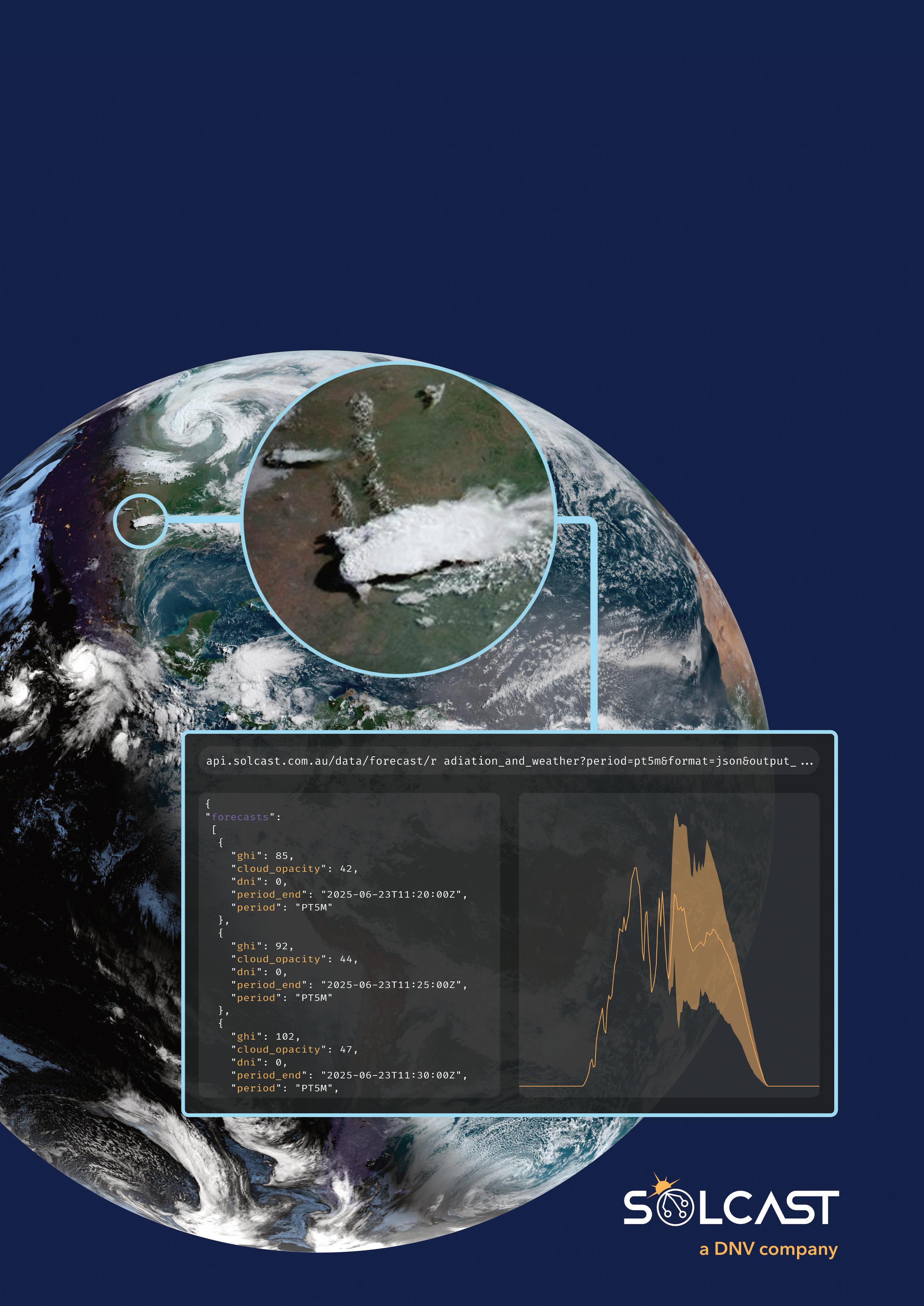


ENERGY GLOBAL
CONTENTS SUMMER 2025
03. Guest comment
04. Shaping the Americas' future
Glenn Kangisser, Partner, Shu Shu Wong, Counsel, and Grace Kaplow, Associate, Haynes Boone, look at energy trends and transformation across the Americas.

10. Adapting as fast as the sea
Sahil Kochhar, Miros, explains how forecasts vs real-time monitoring can aid smarter decision-making in offshore operations.
14. Feasibility and financing to forecasting
Harry Woods, Solcast, a DNV company, Australia, discusses how bankable power models and data can help empower energy decision-making.
20. Improving wind speed forecasts: A machine learning approach
Esa-Matti Tastula, StormGeo, evaluates how advanced machine learning systems can improve the accuracy and usefulness of numerical weather prediction models for the offshore wind industry.
26. Whatever the weather
Renny Vandewege, General Manager, Weather and Climate Intelligence, DTN, details five ways weather intelligence helps renewable energy mitigate weather risks.

Reader enquiries [enquiries@energyglobal.com]
ON THIS ISSUE'S COVER
30. A blueprint for future offshore wind projects
Luke Bridgman, Ørsted, outlines some recent milestones for the world’s largest offshore wind farm: Hornsea 3.
36. Leveraging welding for floating offshore wind
Stephane Allain, Director of Renewables, CRC Evans, champions the development of mechanised welding systems as a crucial tool in the ever-expanding UK offshore wind sector.
40. Floating offshore wind: The five limiting factors
Francisco Siro, Head of Advisory at R&D consultancy, Sagentia Innovation, proposes that a blend of cross-sector learnings and novel approaches will help floating offshore wind achieve its potential.
44. Beyond the mother ship
In a Q&A with Jessica Casey, Editor of Energy Global, Robin Saunders, Concept Naval Architect, Chartwell Marine, highlights how new designs of daughter crafts can help meet the rapidly growing demand for offshore wind vessels in Europe and Asia Pacific.
50. Has the summer of energy storage only just begun?
Dr James Li, Director for Europe, Sungrow ESS, explores how recent advancements in battery energy storage systems have elevated the technology’s status from ‘nice-to-have’ to ‘must-have’ in the global energy transition.
54. Event news
55. Global news
Solcast, a DNV company, delivers historical, real-time, and forecast solar irradiance and weather data as one of DNV Green Data Products. Using satellite cloud tracking, global weather data, and DNV expertise, Solcast delivers high-resolution historical datasets and forecasts for every location on Earth. Energy analysts, grid operators, and asset owners use the Solcast API for planning, performance, and trading workflows to optimise output, manage risk, and unlock new revenue. Learn more: http://www.solcast.com/


Because we’re pioneers.
Across energy and critical infrastructure, we bring expertise where complexity is highest. With globally local teams and proprietary technologies unmatched in the sector, we move projects forward, no matter the challenge.
We’re here to partner on how our specialist welding and coating solutions can help you power tomorrow.



MANAGING EDITOR
James Little james.little@palladianpublications.com
SENIOR EDITOR
Elizabeth Corner elizabeth.corner@palladianpublications.com
EDITOR
Jessica Casey jessica.casey@palladianpublications.com
EDITORIAL ASSISTANT
Abby Butler abby.butler@palladianpublications.com
SALES DIRECTOR
Rod Hardy rod.hardy@palladianpublications.com
SALES MANAGER
Will Powell will.powell@palladianpublications.com
PRODUCTION DESIGNER
Siroun Dokmejian siroun.dokmejian@palladianpublications.com
HEAD OF EVENTS
Louise Cameron louise.cameron@palladianpublications.com
EVENT COORDINATOR
Chloe Lelliott chloe.lelliott@palladianpublications.com
DIGITAL EVENTS COORDINATOR
Merili Jurivete merili.jurivete@palladianpublications.com
JUNIOR VIDEO ASSISTANT
Amélie Meury-Cashman amelie.meury-cashman@palladianpublications.com
DIGITAL ADMINISTRATOR
Nicole Harman-Smith nicole.harman-smith@palladianpublications.com
DIGITAL CONTENT COORDINATOR
Kristian Ilasko kristian.ilasko@palladianpublications.com
ADMINISTRATION MANAGER
Laura White laura.white@palladianpublications.com
Editorial/Advertisement Offices: Palladian Publications Ltd
15 South Street, Farnham, Surrey, GU9 7QU, UK +44 (0) 1252 718 999 www.energyglobal.com
COMMENT
Mark Green
Founder and CEO, Change Rebellion
Businesses are required to adapt constantly, but there are perhaps few industries currently undergoing such seismic changes as the global energy sector.
Against a backdrop of a worldwide sustainability focus and inter-governmental targets for carbon emission reduction, there is also an extraordinary demand for energy, and regulatory requirements around clean technologies are ever evolving.
By 2030, the World Energy Outlook predicts there will be almost 10 times as many electric cars on the world’s roads, renewable energy will account for 50% of electricity share globally (up from 30% in 2023), and offshore wind projects will be attracting three times the level of investment as new fossil-fired power plants.
So, it’s only natural that business leaders are focused on exactly how they are going to meet these demands: planning and implementing ambitious projects such as grid upgrades, renewable integrations, and decarbonisation efforts.
But for these projects to truly succeed, it’s not solely about ensuring the right technology is in place; according to the International Energy Agency, there are 67 million people working in the global energy sector and all of them need to be on board when it comes to the immense changes their businesses are undergoing, or we will simply never achieve the targets needed to keep on powering the world.
That’s why change management is so essential when business leaders are approaching today’s global energy challenges. Put simply, the people who design, implement, and manage all of this new technology are the difference between success and failure.
Visionary strategies are just the start of the process; companies also need to ensure that the day-to-day operations work efficiently and effectively, that diverse teams are aligned, that resistance is mitigated, and that a shared purpose is embedded throughout every team – otherwise, there’s a real disconnect between the plans being put in place and the ability of the sector to implement them effectively.
Change management experts are the bridge between idea and implementation, and their input helps C-suite executives ensure they retain a positive company culture despite any pressure.
While there is huge importance attached to
achieving global targets and ensuring demands are met, ultimately every company needs to ensure it remains profitable and justifies spending based on return on investment (ROI). This is never more true than when large scale investment is required in order to complete the sorts of projects energy companies are undertaking.
Finding between £60 – £120 million to build an onshore wind farm is no small feat, so it needs to be assured that the money isn’t going down the drain and will deliver an ROI as swiftly as possible.
To achieve the required ROI, specialists in change management set out to speed up the adoption of new processes, to increase utilisation, and to ensure teams have the skills and knowledge needed to complete projects proficiently – reducing errors and other inefficiencies which can result from a lack of understanding or training.
If people are willing to adapt, innovate, and embrace new ways of working – and if they understand what is being asked and why the changes have been implemented – then a project is much more likely to succeed and the ROI materialise.
Implementing such ambitious projects without carefully considering the ‘people’ element and expecting that team to deliver results and cross the finish line first is essentially a hopeless dream. By contrast, putting together a comprehensive training programme is the equivalent of implementing a change management strategy, and provides a much higher chance of winning.
At a time when stakes are so high globally, and the timelines for achieving targets are so tight, it’s never been more important to be able to guide people through the changes they’re facing. The global energy sector is evolving so quickly that transformational success is vital, and delays must be avoided.
The ability to guide people through change can and does result in a much higher chance of a healthy ROI, a completed project, and a challenge triumphantly navigated. Ignoring people in favour of a 100% focus on the technology behind the project really could spell disaster, hampering the global efforts to meet rising energy demands and clean technology targets – and potentially even risking the very survival of businesses within the sector.




Glenn Kangisser, Partner, Shu Shu Wong, Counsel, and Grace Kaplow, Associate, Haynes Boone, look at energy trends and transformation across the Americas.
he energy sector across the Americas is currently undergoing a significant transformation, characterised by a dual emphasis on traditional hydrocarbon development and a rapid acceleration towards renewable energy initiatives in some countries. In North America, Canada is continuing to balance the expansion of conventional energy infrastructures with significant investments in clean energy technologies. This transition is influenced by evolving energy security concerns, geopolitical factors, and shifting market dynamics. In the US, the new President (supported by his party’s control of the House and Senate) has shifted policy firmly away from energy transition and towards oil and gas. The growing energy demand, especially from data centres, is driven by market expectations
of strong demand from artificial intelligence (AI) and other cloud computing applications. The ever-changing regulatory hurdles make for a complex landscape in North America. In addition, the US is expected to relax regulatory restrictions on cryptocurrency, which consumes a tremendous amount of electricity. Meanwhile, South American countries continue to emerge as global leaders in renewable energy, with Brazil, Chile, and Argentina spearheading advancements in solar, wind, and lithium-based battery storage. Additionally, increased regional collaboration and foreign direct investments are helping accelerate clean energy adoption across the continent. As global energy needs evolve, these regions are adapting to ensure the economic stability and, in some cases, the environmental sustainability of their respective energy industries.
Current projects in the Americas
In the US, the upstream oil and gas sector is experiencing major consolidations among several of its key players. This consolidation trend works to increase the financial stability of large upstream oil and gas companies, which has been improving ease of access to capital as banks perceive these consolidated entities as lower-risk borrowers.1 Tight lending criteria among traditional US banks has led to a rise in alternative financing methods, including private credit funds, structured finance mechanisms like securitisations, and family offices stepping in to support drilling operations.1 Under the

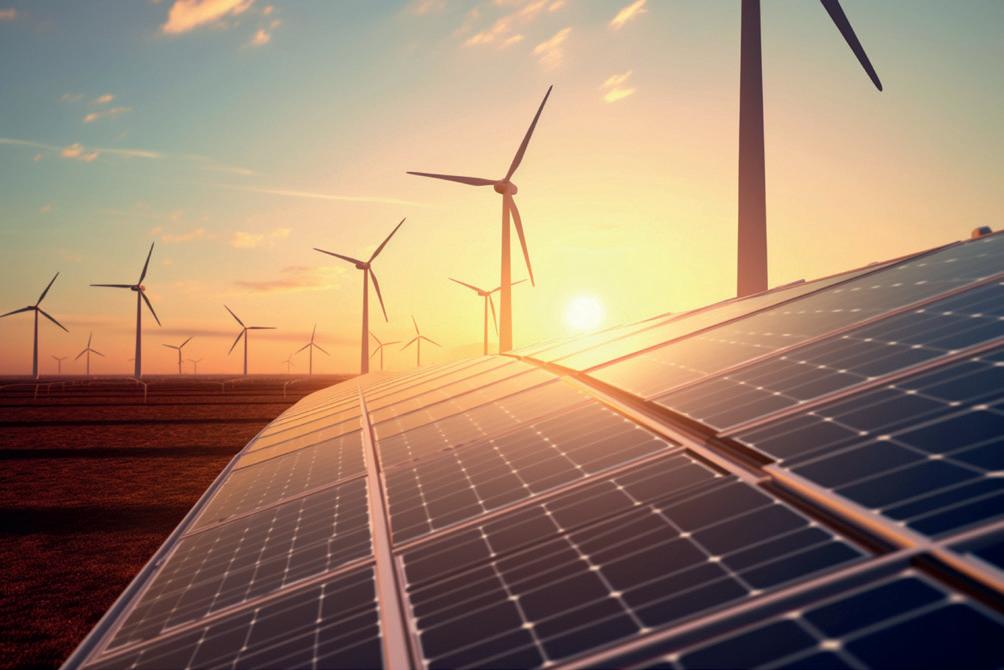
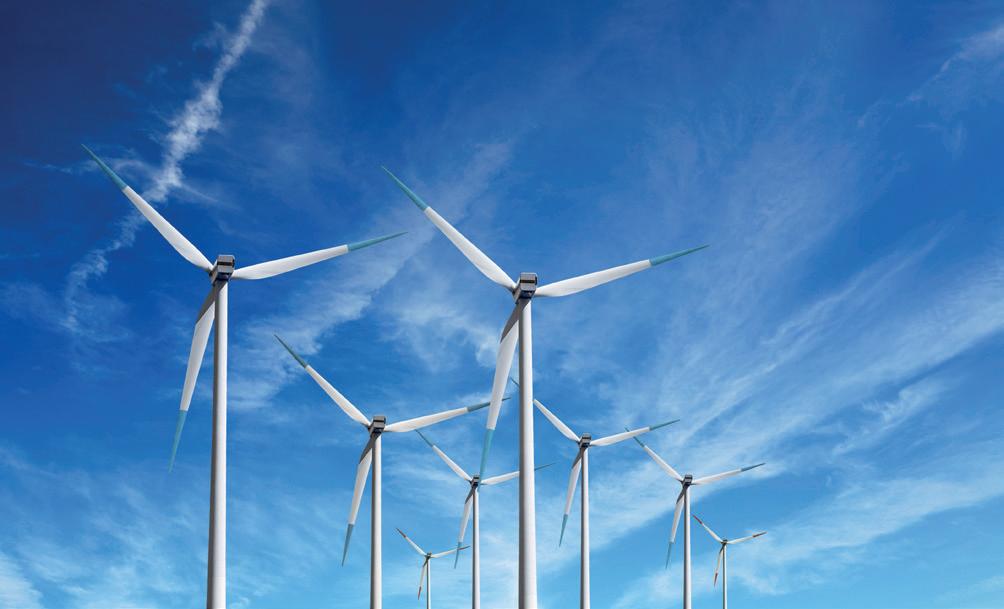
new administration, the US is reducing its investment in renewable technologies, reversing emission standards and cutting other green programmes put in place under the previous administration.
Canada remains a leader in both fossil fuel production and renewable energy. Canada has solidified itself as a global leader in renewable energy with the majority of its electricity generated from hydro, wind, and solar power.2 Recently, Canadian provinces have seen surges in renewable energy production outputs. Canada houses roughly 240 data centres, which are leading corporate renewable energy adoption.3 This is particularly the case in the provinces of Québec and British Columbia, where hydroelectricity is abundant and relatively affordable. Despite this, Canada remains a major producer of oil and gas – it is the world’s fourth largest producer of crude oil and fifth largest producer of natural gas, with the province of Alberta housing many of the country’s main hydrocarbon reserves.4 Alberta is known for its oil sand deposits, which has led to projects including the Athabasca Oil Sands project, the Horizon Oil Sands project and the Cenovus’ Foster Creek project.5 Recently, the expansion of AI and the growth of cryptocurrency mining have significantly increased energy demands and consumption throughout the continent. This increased demand has led to new challenges regarding grid stability, transmission capacity, and energy pricing models, prompting investments in renewable energy sources to meet these rising demands.6
In South and Central America, numerous countries are experiencing a significant shift towards renewable energy. Brazil continues to dominate the continent’s clean energy transition, emerging as a regional leader with roughly 85% of its electricity production coming from various renewable sources.7 This dominance is due in part to Brazil’s hydropower infrastructure from its many powerful rivers, extensive wind energy capacity, and recent advancements in solar technology. Some of Brazil’s hydropower projects include the world’s second-largest hydroelectric power plant, Itaipu,8 and others like Belo Monte, Tucuruí, and Santo Antônio.9 Brazil is expected to continue expanding its transmission lines with a planned investment of US$20 billion into its electricity transmission sector by 2029.7 Chile and Argentina are rapidly expanding solar and wind energy thanks to favourable policies and abundant natural resources, including lithium, which is critical for battery storage. In 2024, the Chilean government selected six areas for new lithium extraction projects and asked private companies to submit development proposals.10 Additionally, Chile’s Atacama Desert, which has the highest solar irradiation on Earth, has become a focal point for significant investment.11 Smaller nations like Panama and Costa Rica are notable for generating nearly all of their electricity from renewable sources.12 Mexico has been focusing on expanding its renewable energy sector, particularly emphasising solar and wind power.13 Some noteworthy Mexican renewable energy projects include the 1000 MW Tarafert La Laguna solar photovoltaic (PV) park in Durango, the 1000 MW Puerto Penasco 1 solar PV park in Sonora, and the 357 MW Hidalgo 1 & 2 solar PV park in Hidalgo.14 Meanwhile, Mexico is balancing its renewable energy initiatives with a continued reliance on oil and gas production. This balance has
We pioneer solutions for the world’s largest industries, focusing on reducing hard-to-abate emissions. With future-facing technologies, digital solutions, and a continuously developing core portfolio, we have the experience, technology, and passion to drive sustainable progress. We move big things to zero with our cutting-edge technologies.
everllence.com



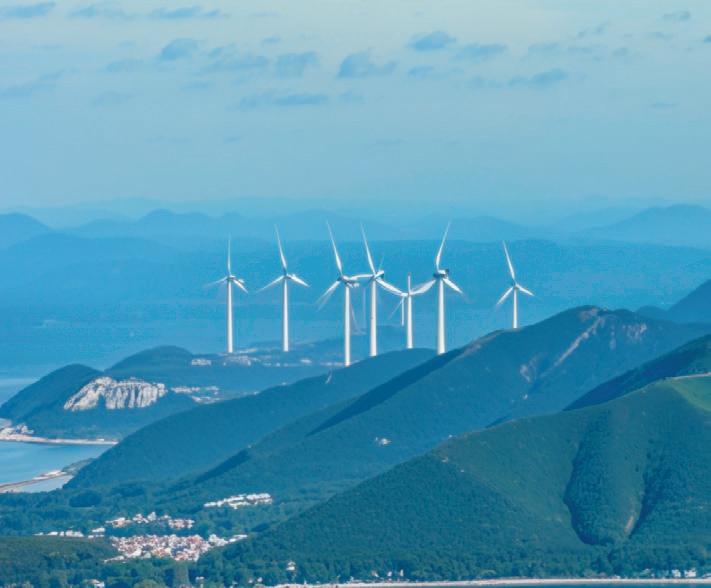




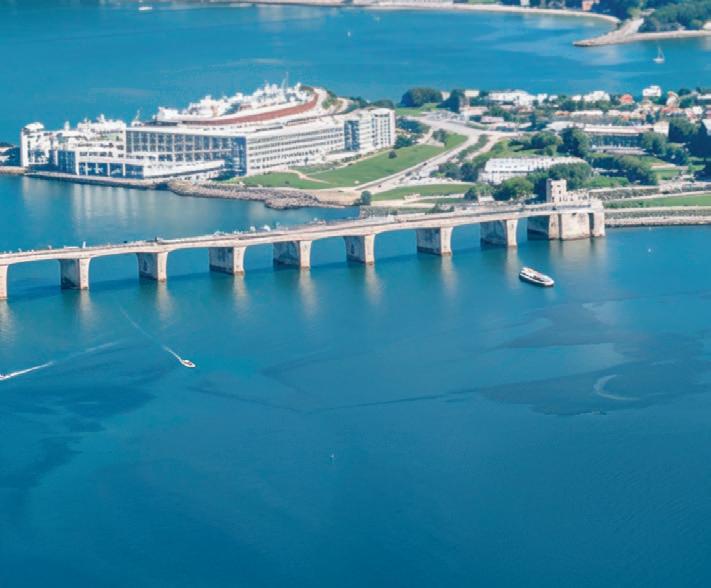
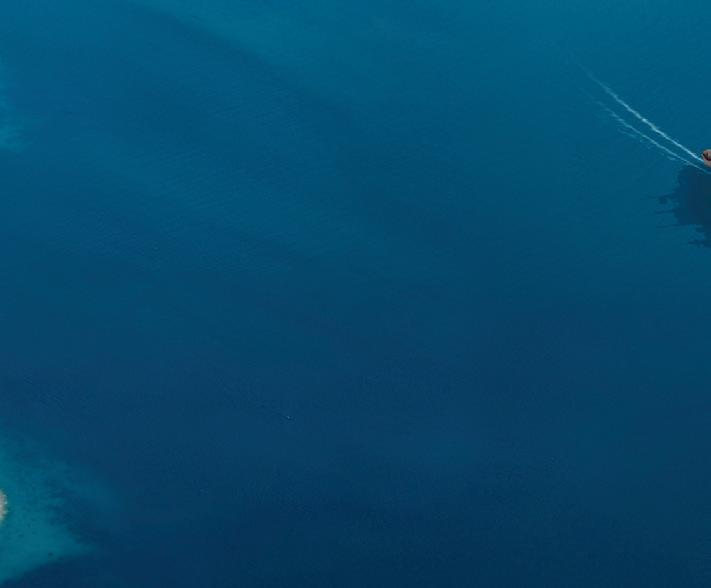


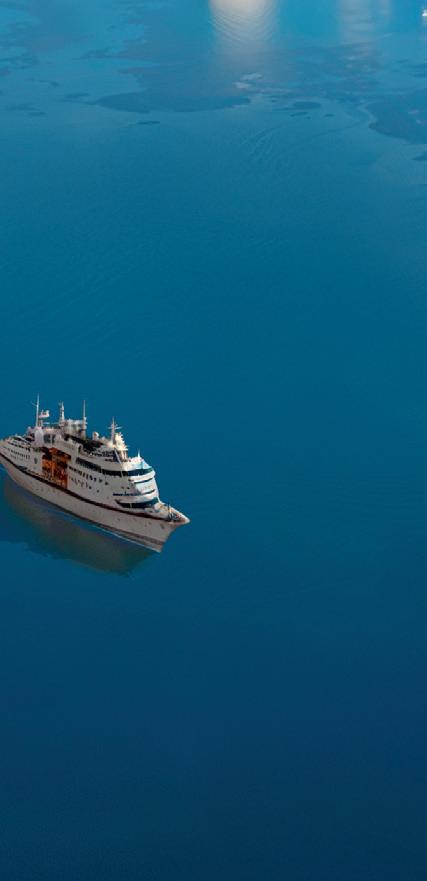

created policy debates surrounding energy sovereignty and private-sector participation. South America is a major global supplier of the raw materials that are essential for energy storage, particularly lithium. Countries like Chile, Argentina, and Bolivia are among the largest lithium producers in the area, while Brazil is currently working to invest heavily in biofuels and low-emission hydrogen production.15
Upcoming projects in the Americas
In Canada, experts expect to see a further expansion of renewable energy combined with substantial growth in oil and gas production. In the US, the U.S. Energy Information Administration (EIA) had previously forecasted that utilities and independent power producers would add 26 GW of solar capacity in 2025, following a record addition of 37 GW in 2024.16 The EIA had also anticipated that wind capacity would increase by 5%, which would have translated to a projected wind capacity of roughly 162 GW by the end of 2025 in the US alone. The EIA had also projected that US crude oil production would experience only a modest increase from 13.2 million bpd in 2024 to 13.5 million bpd in 2025.17 This growth would be primarily driven by the Permian Basin, which is expected to account for more than 50% of US crude oil production by 2026. However, all these projections have been called into question based on recent policy changes and the plans of the new administration to significantly increase US oil production. In Canada, high energy consumption driven by extreme weather, a dispersed population, and rapid immigration growth is straining the national energy systems. Nevertheless, provinces are working to boost wind and solar generation in 2025, as recent drought conditions have impacted the reliability of hydropower energy. The Canadian Association of Petroleum Producers projects that oil sands production will increase by approximately 4% in 2025, contributing to overall stability in North American hydrocarbon output.18
In South America, the renewable energy sector is expected to continue expanding rapidly. Argentina and Chile are setting aggressive target goals for expanding their solar and wind energy capacities, which are supported by favourable domestic policies and generous foreign investments. Brazil is continuing to make substantial investments in hydrogen hubs and biofuel production, positioning itself as a major global supplier. Additionally, as demand for battery storage increases, Latin American lithium production is set to expand with investments targeting sustainable mining practices. Governments in this region are also working on improving infrastructure and transmission networks to ensure that renewable energy can be efficiently integrated into national grids.16
Significant legal and regulatory developments over the last two years
Recent regulatory changes across the Americas have played a pivotal role in shaping energy markets, directly impacting investment flows, project feasibility, and overall energy strategies. The past two years have been full of important shifts that the industry has had to learn to navigate.
Governments and regulatory bodies have implemented new policies to encourage or restrict various energy initiatives, balancing economic growth with environmental commitments.
In the US, federal investment in hydrogen and long-duration energy storage has driven technological advancements and infrastructure development over the past couple of years.19 However, recent shifts in federal policy – including the suspension of new federal offshore wind leasing20 – and discussions on revising or repealing key aspects of the Inflation Reduction Act could impact the pace of renewable energy expansion in the US.21 Meanwhile, in Canada, regulatory hurdles are slowing down renewable energy projects, particularly related to transmission and large scale energy loads. As a result, the Canadian government has increased its focus on protecting its energy security through a mix of renewables and traditional fossil fuel production.22 These challenges have sparked debate over the necessity of streamlining approval processes and increasing incentives for private-sector participation. Mexico’s energy policies remain in flux, balancing its historic state-owned energy dominance with increasing private sector investments.23
By contrast, in South America, countries like Brazil, Chile, and Argentina are implementing more aggressive renewable energy policies, offering financial incentives for investors who support green technologies.24 These incentives include tax breaks, subsidies, and favourable tariff structures to encourage private investment. For example, the president of Brazil signed a new law that will provide up to US$3.36 billion in tax credits for companies producing or consuming low-carbon hydrogen.25 The electricity sector is waiting for the green light in regulatory changes that have been under discussion for almost two years. These changes would tackle the capacity payments needed to mitigate the higher intermittency deriving from solar and wind, including large scale batteries, the approval of regulation for offshore wind, and the increased activity of solar distributed generation.26
Outlook
The Americas are navigating a complex energy landscape wherein they must balance the continuing importance of traditional hydrocarbon energy sources with an accelerating transition towards the world of clean, renewable energy technologies amidst shifting policy directions in the US. The consolidation of oil and gas entities in the US, the rising demand for alternative financing, and the growing energy consumption of data centres are shaping North America’s energy future. In South and Central America, countries are capitalising on their renewable resources, lithium reserves, and biofuel potential to drive sustainable growth. In the upcoming years, both regions are poised to play critical roles in the global energy transition. Market forces, regulatory frameworks, and technological advancements will continue to shape the region’s energy trajectory and the future of energy consumption worldwide.
References
A list of this article’s references can be found on the Energy Global website at: www.energyglobal.com/special-reports

































































Develop








































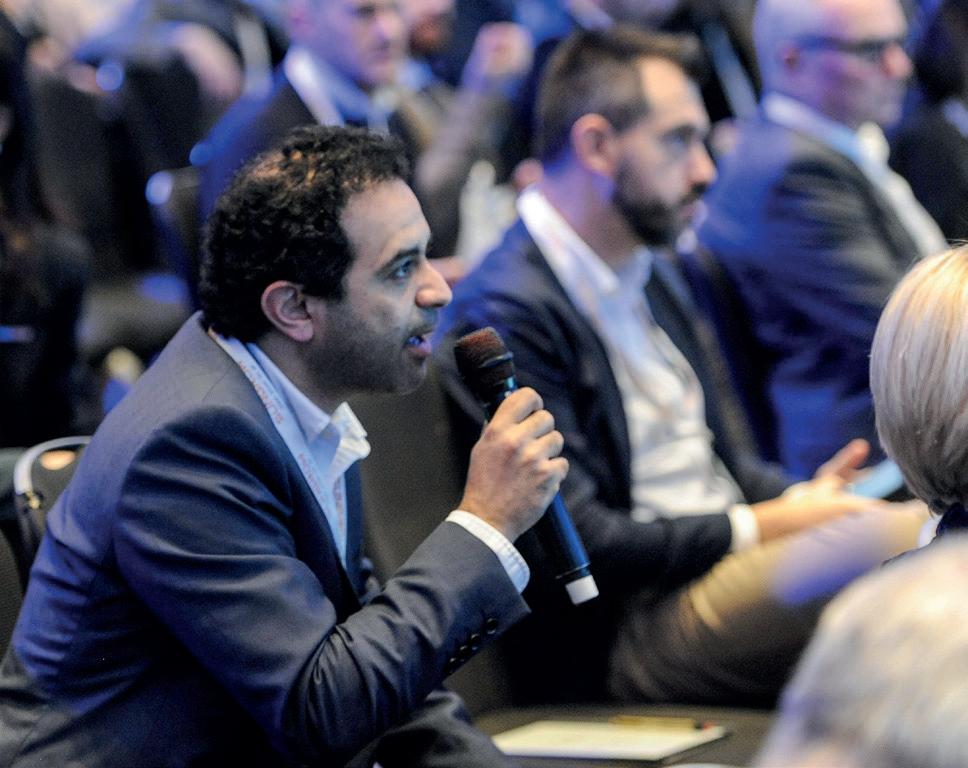
















Lead








Strengthen


Advantages of Corporate Team Rates






























































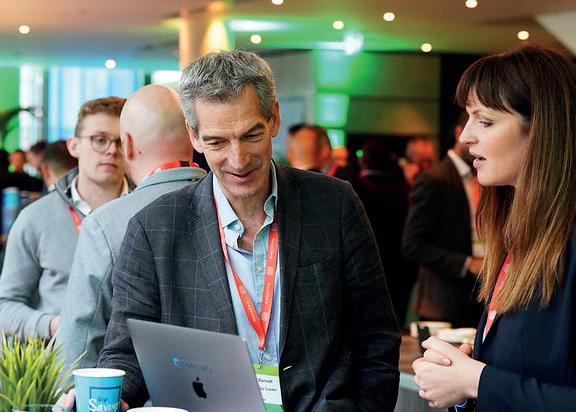





















Sahil Kochhar, Miros, explains how forecasts vs real-time monitoring can aid smarter decision-making in offshore operations.
n the offshore industry, where conditions can shift unpredictably and at short notice, making the right decision at the right time is more than just crucial – it is the difference between a successful operation and a potential disaster. Whether it is oil and gas drilling, installing wind turbines, or conducting heavy lifts, the ability to accurately predict and respond to environmental changes is key to ensuring safety and maximising efficiency.
Traditionally, forecasts have been the primary tool for planning offshore operations, but with advancements in real-time monitoring, there is now a new way to make smarter, data-driven decisions by combining both to eliminate uncertainties.
Role of forecasts in offshore operations
For decades, forecasts have been the backbone of offshore planning. These forecasts, provided by national meteorological agencies and private weather providers, predict weather and sea conditions over a period – usually ranging from 1 – 7 days.
The models that power these forecasts use vast amounts of data, including satellite imagery, oceanic data, and atmospheric patterns. They help operators plan operations, like drilling or lifting, around anticipated weather conditions.
However, forecasts are not perfect. While short-term forecasts can be relatively accurate, typically around 80 – 90% for up to three days, their accuracy drops as the forecast period extends. For example, forecasts for 7+ days might only be accurate 50 – 70% of the time.
They also often struggle to account for sudden, extreme weather events like storms or rapid changes in sea states, especially in regions with complex coastal geographies. Still, forecasts are the best tool available for planning operations in advance, as they provide the closest possible estimation of what conditions might be.
Offshore operators rely on forecasts from major weather providers, both national and private, with around 4 – 5 companies dominating the global market. Nearly all offshore operations use


Figure 1 Determining vessel operability is one of the most critical aspects of offshore operations. A vessel’s ability to perform under varying sea conditions is vital to ensuring both safety and operational success. Source: Jan Rune Smenes Reite.
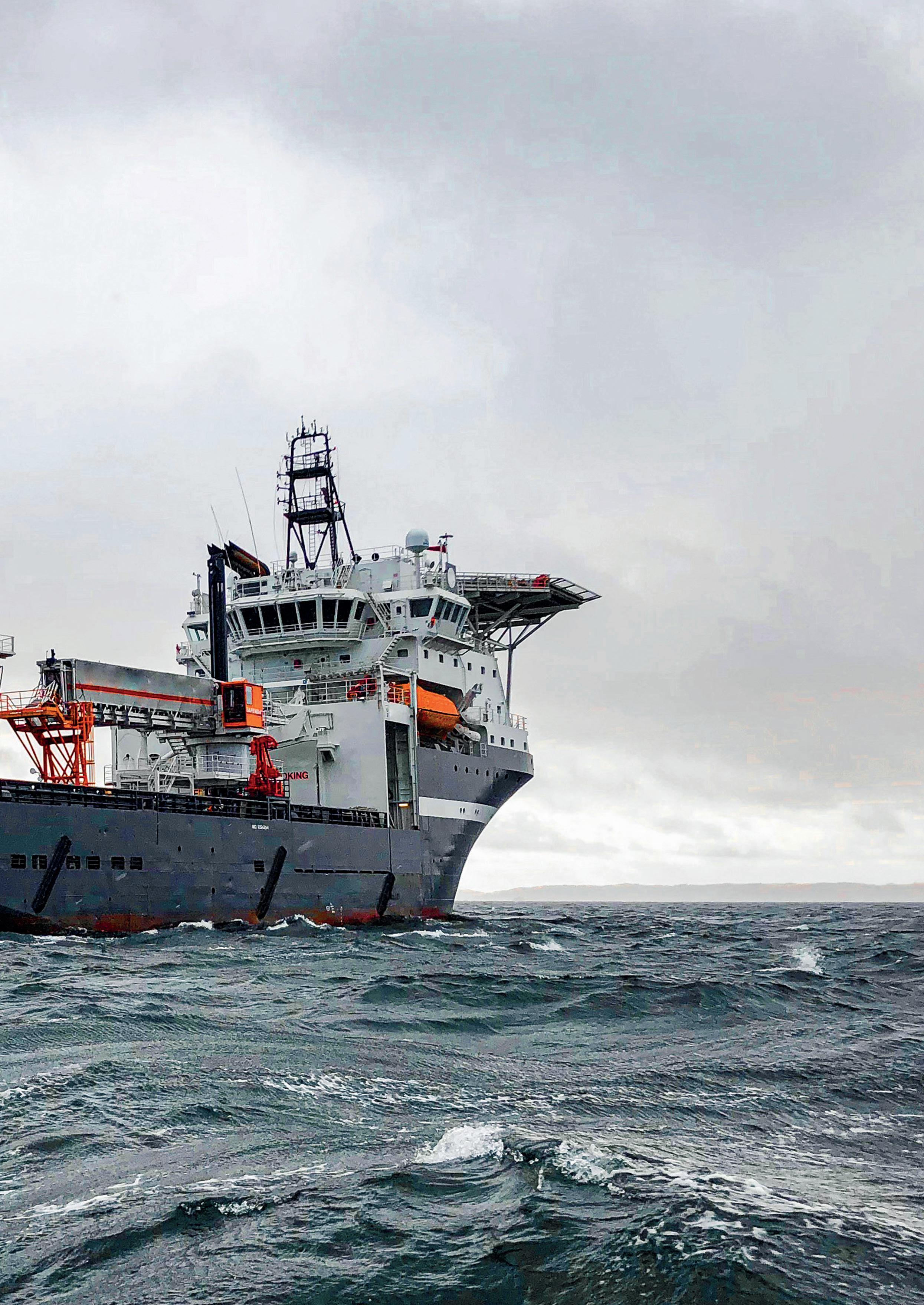
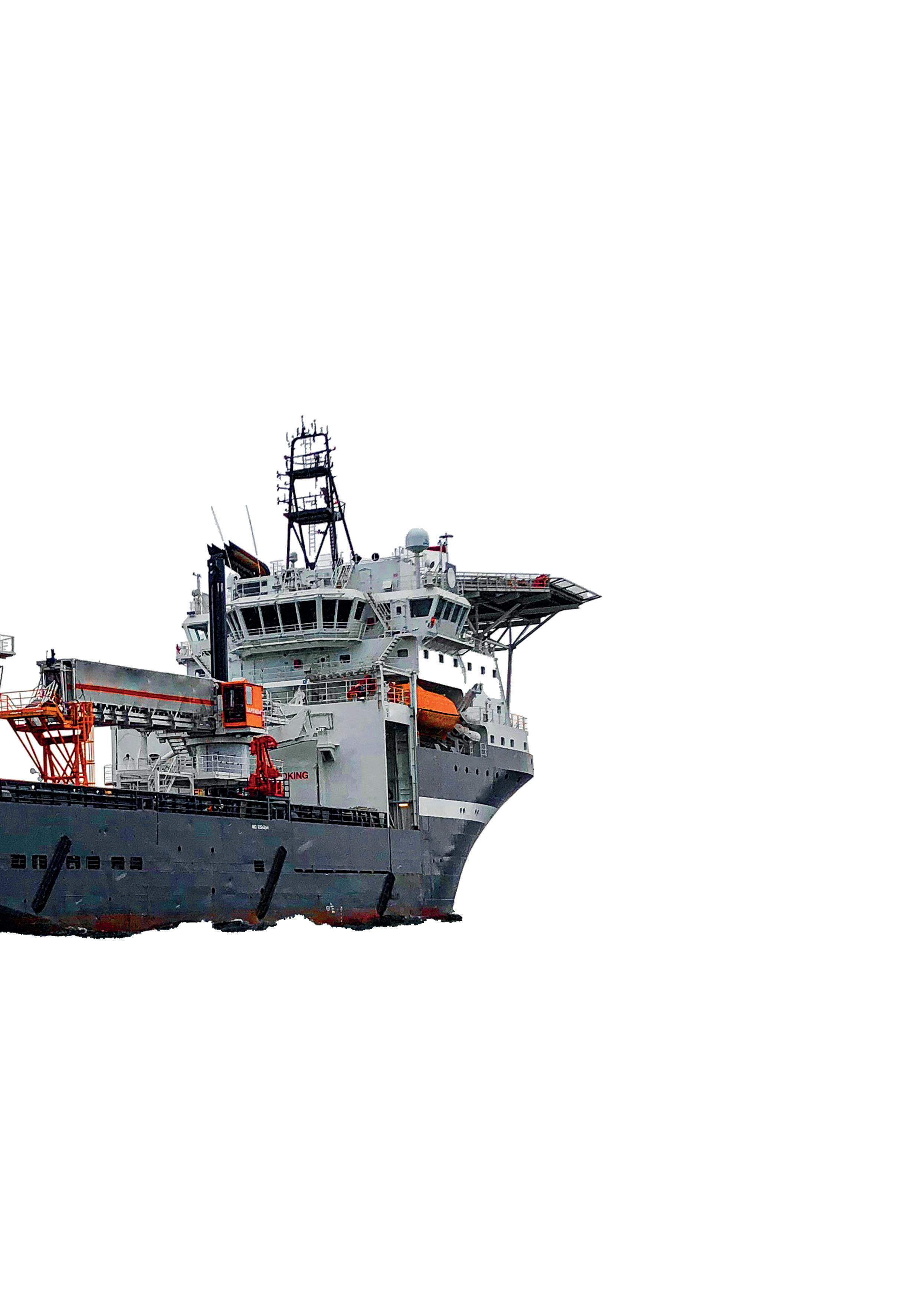
one or more forecast services, which are updated several times daily. Despite their limitations, forecasts remain indispensable for planning operations, offering an essential glimpse of what lies ahead.
The emergence of real-time monitoring
While forecasts offer a predictive look into the future, real-time monitoring offers a live snapshot of current conditions. This technology is rapidly transforming offshore operations by

Figure 2. Radar-based systems like Miros WaveSystem give operators the ability to track conditions directly at the vessel’s location, ensuring that the team is responding to the actual conditions at the site – not the conditions forecasted for a broader area. Source: Miros WaveSystem.

Figure 3 . PredictifAI can predict both sea conditions and vessel motions up to 2 mins. in advance. Additionally, PredictifAI also visually presents ‘Predictions vs Experienced Vessel Motion’ without using any models into its analysis. Source: Miros PredictifAI.
providing continuous, up-to-the-minute data on sea states, wind speeds, and other environmental factors. Real-time monitoring systems use sensors and radar-based technology to measure conditions directly at the site of operation, ensuring that the data is not just accurate but highly specific.
The beauty of real-time monitoring lies in its accuracy. Unlike forecasts, which can provide a broad picture of predicted conditions, real-time systems measure the exact conditions experienced by the vessel or platform at that precise location. These systems allow operators to monitor wave heights, currents, wind speed, and direction in real time, adjusting operations on the fly to account for changes in weather that might not have been anticipated. By continuously collecting and analysing this data, operators can make informed decisions that optimise safety and minimise risks.
For example, radar-based systems like Miros WaveSystem give operators the ability to track conditions directly at the vessel’s location, ensuring that the team is responding to the actual conditions at the site – not the conditions forecasted for a broader area. This ability to make data-driven, real-time adjustments significantly enhances the safety and efficiency of offshore operations.
Today’s best practices for determining vessel operability
Determining vessel operability is one of the most critical aspects of offshore operations. A vessel’s ability to perform under varying sea conditions is vital to ensuring both safety and operational success. Traditionally, this has been determined using response amplitude operators (RAO) – a mathematical model that predicts how a vessel will react to waves, wind, and other environmental factors. RAO is based on sea trials and vessel characteristics, offering a very qualified estimation of a vessel’s operability. However, it is not perfect. While RAO provides a good theoretical framework, real-world conditions often diverge from the model’s predictions.
Today, determining vessel operability requires a combination of RAO, weather forecasts, and historical data. Weather forecasts give operators an outlook on potential sea and wind conditions, while RAO models simulate how the vessel will respond to those conditions. Historical data adds another layer by providing insights from past operations under similar conditions.
However, all these tools, while useful, have limitations. The predictions made by RAO models may not fully capture the impact of extreme weather, or they might not account for minor yet critical variations in real-time conditions. As a result, the accuracy of vessel operability predictions can be improved by combining all these methods with real-time data, which allows for immediate adjustments based on the actual conditions at the site.
Data-driven elimination of uncertainties and conservatism
Real-time monitoring has the potential to drastically reduce the uncertainties and conservatism that often accompany offshore operations. Traditionally, operators have tended to overestimate the risks of certain operations, applying conservative safety margins to account for the unpredictable nature of the sea. While this is a safety measure, it often leads to missed operational opportunities, increased downtime, and wasted resources.

This is where Miros’ PredictifAI® comes into play. By integrating radar-based, real-time monitoring systems with artificial intelligence (AI), PredictifAI offers predictive capabilities that go beyond just reporting current conditions. It analyses real-time data and uses it to predict near-future conditions, enabling operators to make decisions based on what is likely to happen next. It can predict both sea conditions and vessel motions up to 2 mins. in advance. Additionally, it also visually presents ‘Predictions vs Experienced Vessel Motion’ without using any models into its analysis. This is an innovative way to look at RAO’s and verify their relevance while conducting operations allowing for more accurate planning and better-informed decisions about when to continue operations or when to pause them.
By combining real-time data with AI-powered predictions, operators can eliminate much of the conservatism that arises from uncertainty. Instead of relying on broad safety margins based on forecasts or RAO models, operators can make more precise decisions, reducing unnecessary downtime and improving overall operational efficiency. PredictifAI’s ability to predict vessel motion and wave behaviour in real-time means that operators can adjust their plans on the fly, ensuring that operations are as efficient and safe as possible, even in challenging conditions.
From reactive to ready in real time
In offshore operations, where the stakes are high and the environment is unpredictable, making the right decisions is essential. While forecasts have served as the primary tool for planning operations for decades, the rise of real-time monitoring technology offers a more accurate, responsive way to operate in dynamic conditions. By integrating real-time data with traditional forecasting methods, offshore operators can make smarter, data-driven decisions that optimise safety, efficiency, and operational success. Technologies such as PredictifAI are helping to eliminate the uncertainty and conservatism that have traditionally characterised offshore decision-making, opening the door to more agile, precise, and proactive operations. As the industry continues to evolve, embracing this new wave of technology will be key to unlocking greater operational excellence in offshore activities.
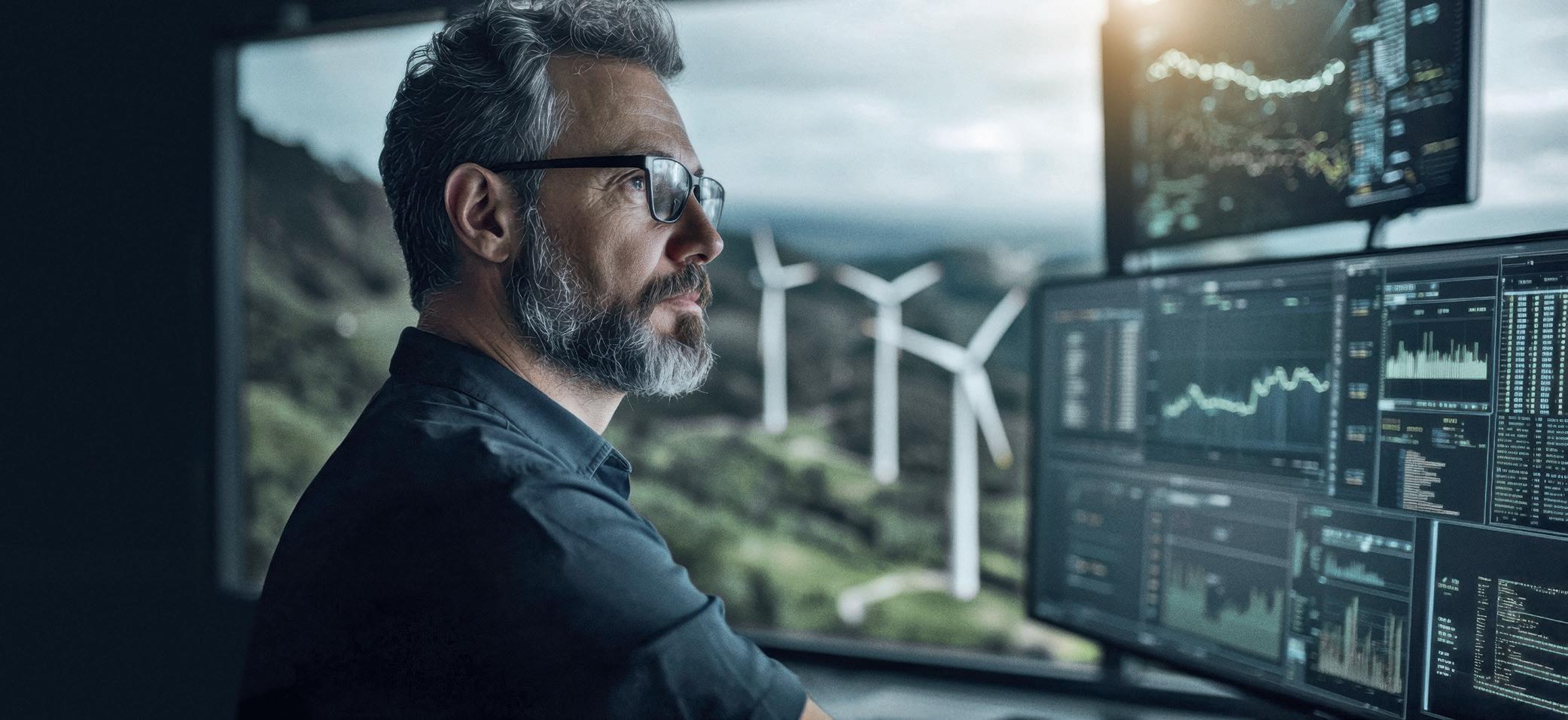
Wind
Centralised monitoring and control
Wind Power SCADA offers comprehensive monitoring and control for individual wind turbines and entire wind farms. Reduce complexity, increase efficiency.
Convenient turbine controller
The parameters at the turbine can be intuitively displayed using our WebMI. Flexibly expandable and browser-based for remote access.

Harry Woods, Solcast, a DNV company, Australia, discusses how bankable power models and data can help empower energy decision-making.
decade ago, renewable energy decisions were chained to static spreadsheets, sparse ground station measurements and months-long consultant loops. Today, any project stakeholder – from an analyst scouting land in Brazil to a control-room engineer fine-tuning reserves in Victoria – can pull a bankable, sub-hourly irradiance or wind time-series with a single application programming interface (API) call. That simple capability is quietly rewiring the energy industry’s economics:
> Developers unlock more sites, faster, with less risk.
> Financiers can quantify uncertainty, rather than smoothing it over.

> Operators isolate performance issues in minutes rather than quarters.
> Traders, energy management system (EMS) vendors, and system operators have live actuals and forecasts built into their dashboards.
Global decarbonisation schedules, volatile power markets, and rising capital costs are driving changes in the energy industry as renewable generation increases, and the pace of growth accelerates. In increasingly competitive markets, renewable developers, operators, and investors have little margin for error. The most effective operators are now making decisions that once relied on Excel spreadsheets and sparse measurements with high-fidelity, validated irradiance, and weather
data APIs. Access to bankable actuals and power models and accurate forecasting data, such as those delivered through DNV’s Green Data products, deliver key inputs to digital tooling. Those that adopt these tools are reducing uncertainty, accelerating project timelines, and sharpening operational choices from planning to portfolio optimisation.
This article explores lessons from working with partners and customers across the energy industry. It is a guided tour of how access to trustworthy data is changing decision-making at four pivotal stages of the renewable asset lifecycle – and the impact those shifts are having to those organisations delivering on the energy transition.
Trust begins with the data
Every gigawatt of new renewable capacity must compete for limited capital and increasingly constrained grid infrastructure. In this environment, the differentiator is decision-grade environmental intelligence: knowing, not guessing, how much irradiance or wind a site will receive over its lifetime, in the next hour, or next five minutes. Irrespective of technology –photovoltaics, wind, hybrids, or battery storage – engineering and finance teams are starting to build their cases on detailed, bias-corrected resource models delivered through an API rather than a spreadsheet.
DNV, through their investment in green data products like Solcast, is translating more than 160 years of risk-management experience into cloud-native datasets, power models, and analytics that can be queried instantly and delivered digitally. Access to digitally native data and models is benefiting work across the lifecycle of a modern renewable asset – feasibility, design, monitoring, optimisation, and grid operation. At every decision point, innovation is driving progress by those who are already using high-fidelity weather and power-models in their day-to-day workflows and design their processes around those data.
Feasibility and site selection: Getting the map right
Speed and scale
Developers who once performed painstaking desktop studies on a handful of prospects each month now screen thousands of parcels and configurations. Scripts tap irradiance and wind APIs directly, feeding high-resolution terrain, albedo, and cloud-motion layers into automated layout engines; yield estimates return in minutes rather than weeks. That velocity produces a larger, better-ranked funnel – critical when auction portals open and competition is fierce. Legacy requirements for 8760 files, and static, clunky systems, serve to slow down the feasibility process, and force analysts to swap and manipulate data between systems.
Granular accuracy through variability analysis
Quality is keeping pace with speed. Contemporary workflows can combine typical meteorological year analyses with multi-decadal time-series and long-term averages so that analysts can quantify inter-annual variability and tighten P50 and P90 spreads even in a changing climate. Instead of assuming a static resource baseline, feasibility teams should be considering how factors such as El Niño frequency, aerosol loading, or storm-track drift are altering risk profiles. Bankable power models built for this level of detail, like DNV’s SolarFarmer, include local shading engines, 3D terrain losses, and sub-hourly resolution to reduce model bias over legacy hourly models, but need high-resolution irradiance inputs. DNV’s Solar Resource Compass uses the same SolarFarmer power model, and supports analysts to quickly select the most appropriate source of irradiance data, then implements DNV’s methodology for solar resource assessment. This gives developers results in minutes, supporting fast site-selection decision making, using investor-ready models and delivering the confidence to act from day one.

Outcome
Better data at the outset eliminates avoidable financing failures, accelerates permitting, and builds lender confidence. In competitive procurement, even a single percentage-point reduction in uncertainty can narrow the debt-service coverage ratio and tilt project economics decisively.
Design and bankable resource assessment: From guesswork to guarantees
Seamless workflows
Transitioning from prospect to detailed design should not require bouncing among siloed applications. Bankable irradiance and power-model APIs can, and are already starting to be, applied directly to the digital asset design tools that are being used for designing assets of all sizes. Adjusting row spacing, layout, tilt, and panel choice should result in a swift recalculation of uncertainty-weighted yields without needing to
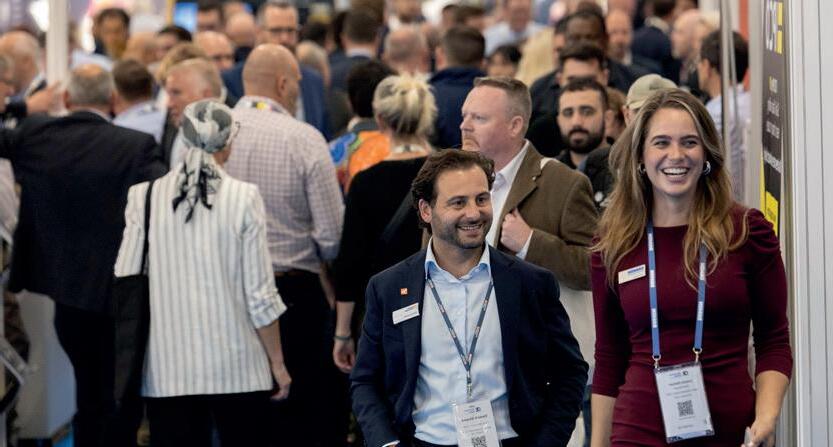
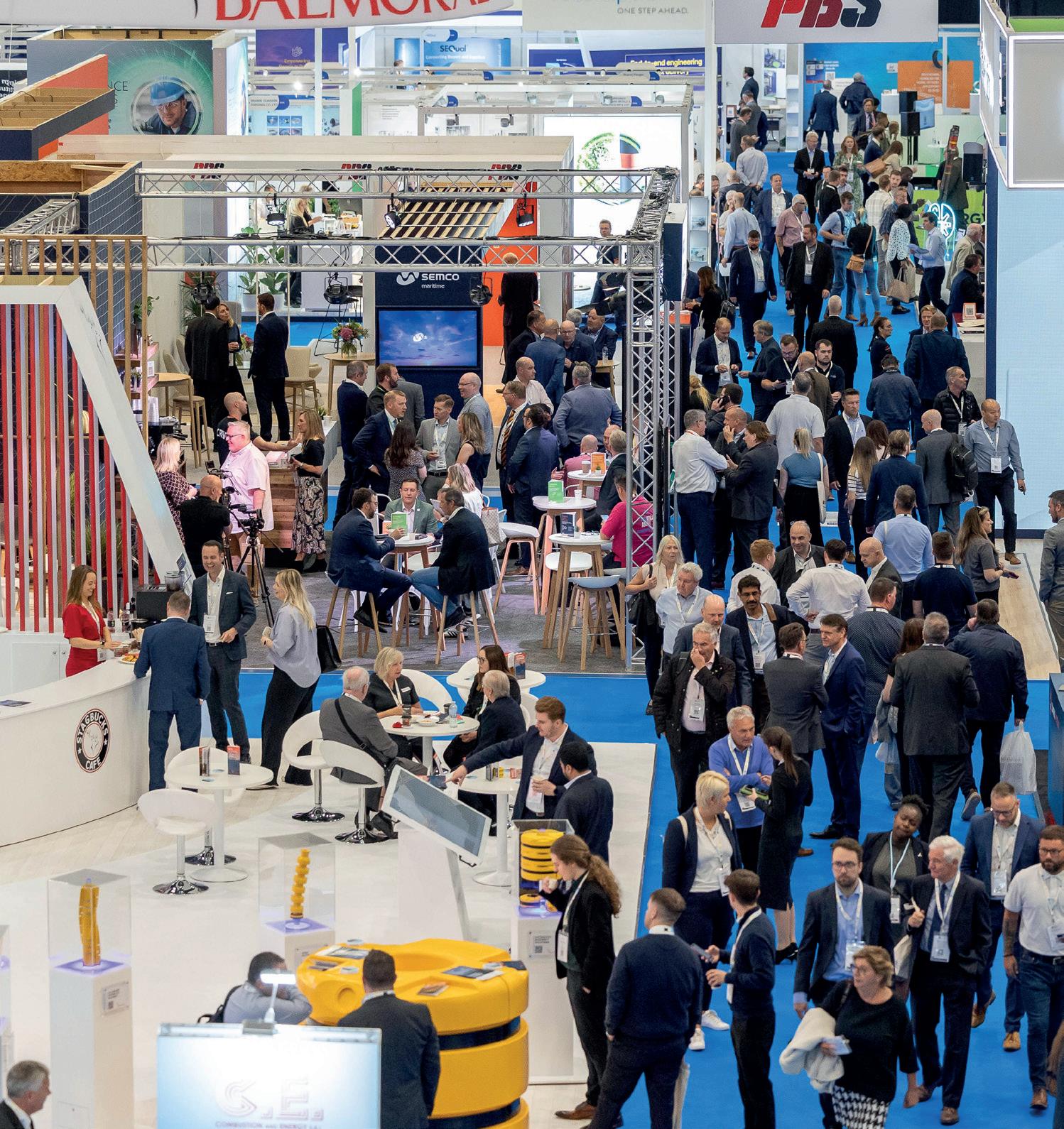

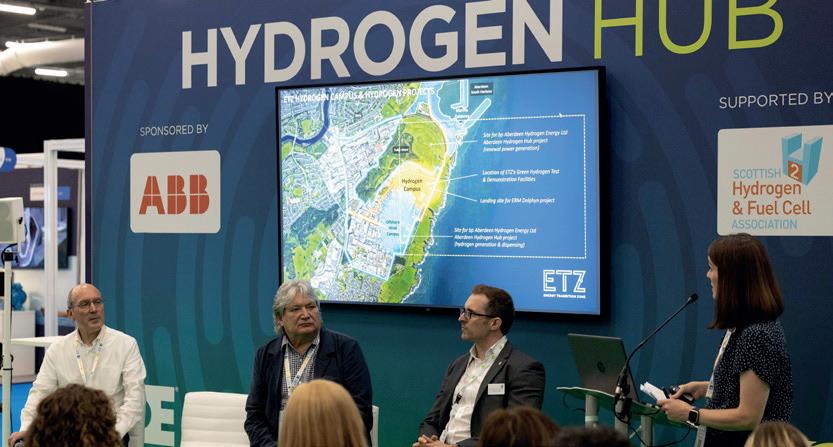

re-download a CSV or replicate geometry in a different tool. Requiring a handoff from design tool to yield assessment not only interrupts workflows, but adds untraceable bias corrections and reduces the fidelity of yield calculation.
Transparent uncertainty
For years, investment in renewables has been based on hourly data that folds decades of climate variability into an estimated year. But the output of the design and resource assessment process can be more than just a P50 number. Investors, owners, and stakeholders expect detail behind the relationship between their financial performance and the real weather-adjusted performance
of the asset. Savvy investors in renewable energy understand that the climate is changing, and that impacts financial performance of renewable assets – they need more than just a bias correction. For lenders, the provenance of each number is as important as its magnitude; automated audit trails and independent third-party data sources can serve to stabilise this uncertainty risk. Establishing a trusted data source, and an open, transparent way of measuring relative performance, is key to giving investors the confidence needed to drive investment in the energy transition.
Performance monitoring and reporting: Understanding weather losses

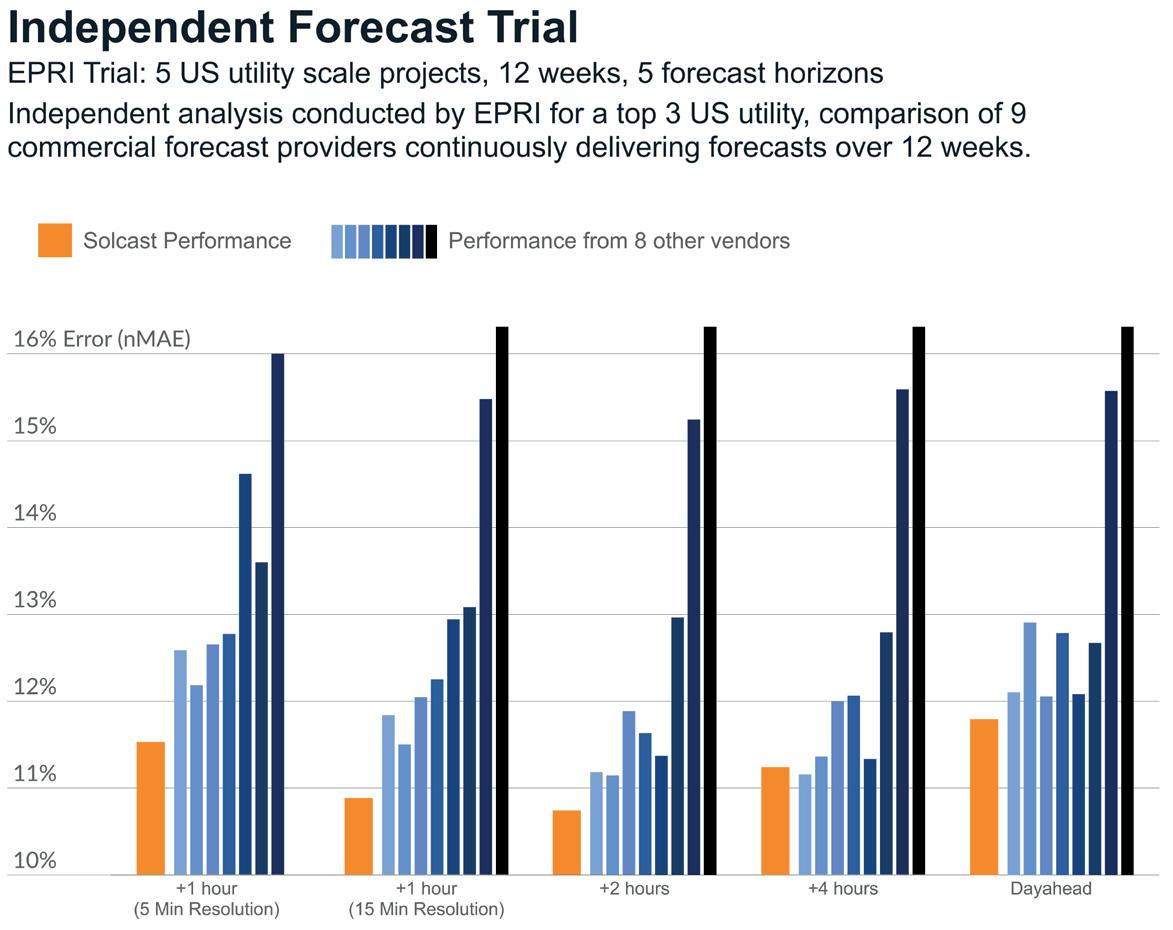
Figure 3 . Results from a solar forecasting trial run by independent US non-profit Electric Power Research Institute (EPRI). Of the nine vendors participating, Solcast had the lowest forecast error overall. Solcast also had the lowest error in four of the five forecast horizons, and was the only provider to achieve <11% normalised mean absolute error (nMAE) in any time horizon.
Live baselining
Many owners discover under-performance only after month-end when SCADA data are reconciled against local sensors that may or may not have been properly installed, cleaned, or calibrated. Today, SCADA feeds can align automatically with real-time irradiance and wind inputs so that verifiers can distinguish weather-driven variance from curtailment events or equipment anomalies while the data are still actionable. DNV’s Solar Resource Compass is embedding that logic: benchmarking output actuals against the P50 and flagging deviations that exceed expectations.
Visualising weather losses
When a plant’s energy delivery falls short, owners want to see where the losses originate. A real-time fusion of SCADA with minute-scale satellite and numerical weather data tells an O&M engineer, within the hour, whether a 4% shortfall is down to passing cloud, inverter tripping, or unreported curtailment. That clarity shortens root-cause investigations, strengthens performance guarantee claims, and sharpens insurance negotiations.
Portfolio-level perspective
Asset managers and infrastructure funds juggling hundreds of projects across continents need to speak a common language. A globally-consistent dataset can bring assets in São Paulo, San Francisco, and Seoul onto the same analytical canvas, enabling true apples-to-apples benchmarking.
In the residential and commercial-rooftop segments sensors are rare, yet asset owners still demand performance transparency. High-resolution cloud data are excellent backfill sources – high quality satellite derived irradiance data approaches the expected accuracy of on-site pyranometer data and beats fleets of sensors.
Optimisation and forecasting: Predicting power generation
Cloud nowcasts
A 2024 independent competitive forecasting trial conducted by EPRI found a small group of commercial irradiance forecasters delivered improved forecasts in the 0 – 4 hour range. The Solcast data science team, having spent 12 weeks
continuously optimising their cloud nowcast to improve short-term accuracy, were pleased to have won that trial, but agree that, without cloud modelling, one cannot expect to forecast cloud movement. It is a highly competitive space, and artificial intelligence (AI) and machine learning (ML) improvements mean that all vendors in the space are improving their quality. Industry partners are already benefitting from accuracy improvements, as short-term forecasts are used across the industry to improve operations, financial optimisations, and manage dispatch with fewer penalties and less stress on equipment.
Hybrid plant and BESS dispatch
Battery energy storage systems (BESS) prosper when they know what the sun or wind will do next. Forecast-driven energy management software can stack arbitrage, frequency-control, and curtailment-avoidance revenue streams while respecting state-of-charge limits. Wärtsilä directly integrated Solcast Forecasts into their GEMS EMS platform, needing a forecast that could be relied on for EMS management in islanded grids. When looking for a data source, the company needed an API it could rely on to integrate to its product and give five-minute data to closely manage ramp rates of renewable generation assets.
ML upgrades
ML models that have been trained on generation data from connected SCADA systems consistently outperform pure numerical-weather-prediction baselines. Use of ML enables models to go beyond the theoretical accuracy of physics-based
models that require complex inputs to create fine-tuned digital twins, and run fast, functional models that deliver accurate forecasts based on the reality of production conditions. Connecting these systems together with a live, high-resolution weather API supports the portfolio scale management, forecasting, and trading of hybrid renewable fleets at a grid level – and the high-speed decision-making that demands.
Delivering data one can bank on
The ongoing pace of the energy transition rests on the trust of investors – and in a digital world they expect trustworthy, traceable data on the performance of their investments. From prospecting to grid dispatch, the market leaders will be those who replace assumptions with evidence, manual interfaces with APIs, and static spreadsheets with living dashboards of connected data.
DNV’s Green Data product team are using decades of measurement science and global advisory experience to build tools, models, and platforms in a format that any analyst can query with a single line of code. Whether tightening a P50, reporting on asset performance, or bidding a hybrid plant, stakeholders armed with bankable data gain credibility, compress transaction costs, and move first.
Satellite innovation, ground-station expansion, Internet-of-Things instrumentation, and AI will continue to shrink error bars, but the tools available today are already good enough to start moving. The challenge, and the opportunity, is straightforward: audit data pipelines, patch the weak links, and let trusted numbers accelerate the energy transition.

+44 (0)1252 718999 reprints@energyglobal.com
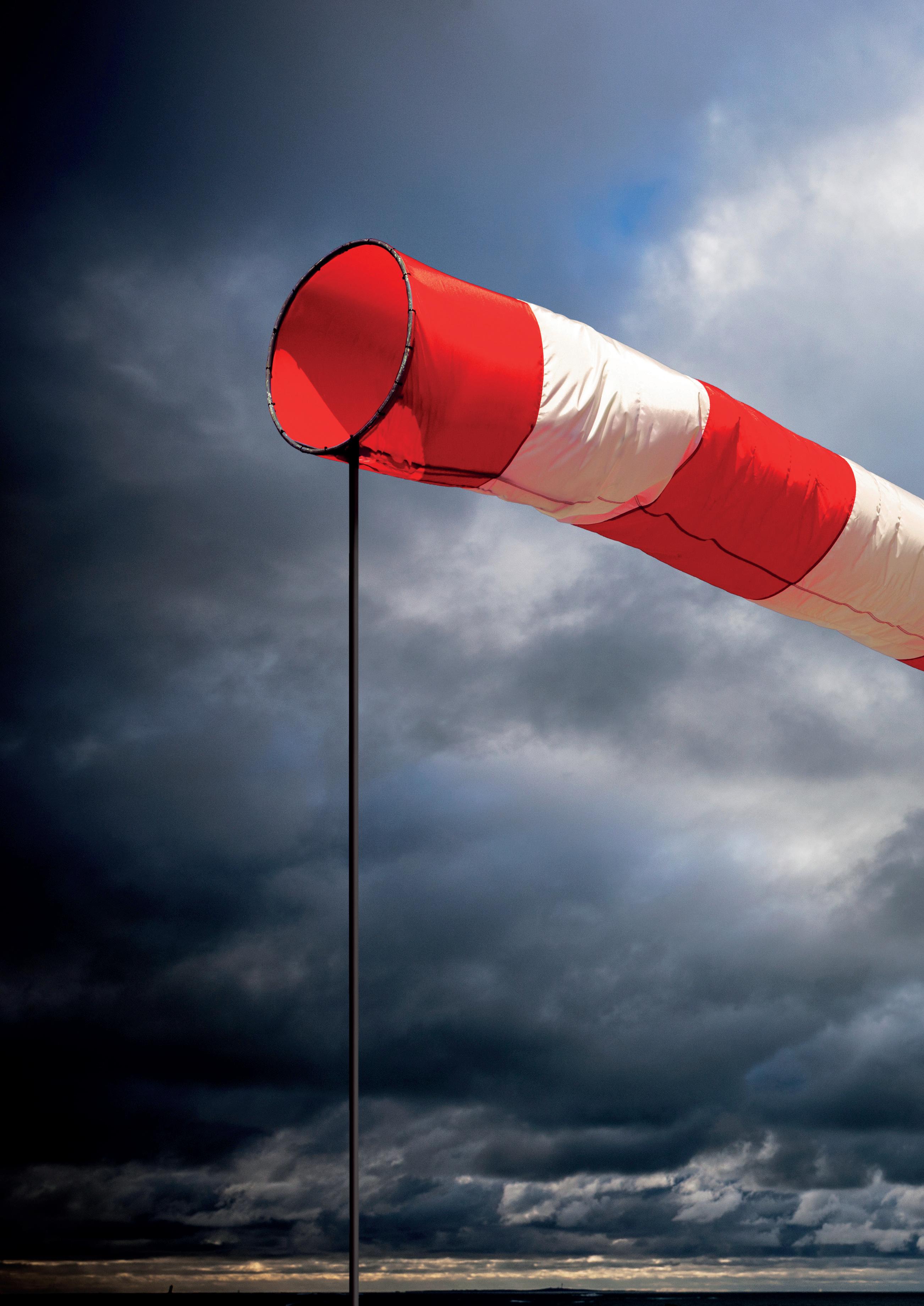
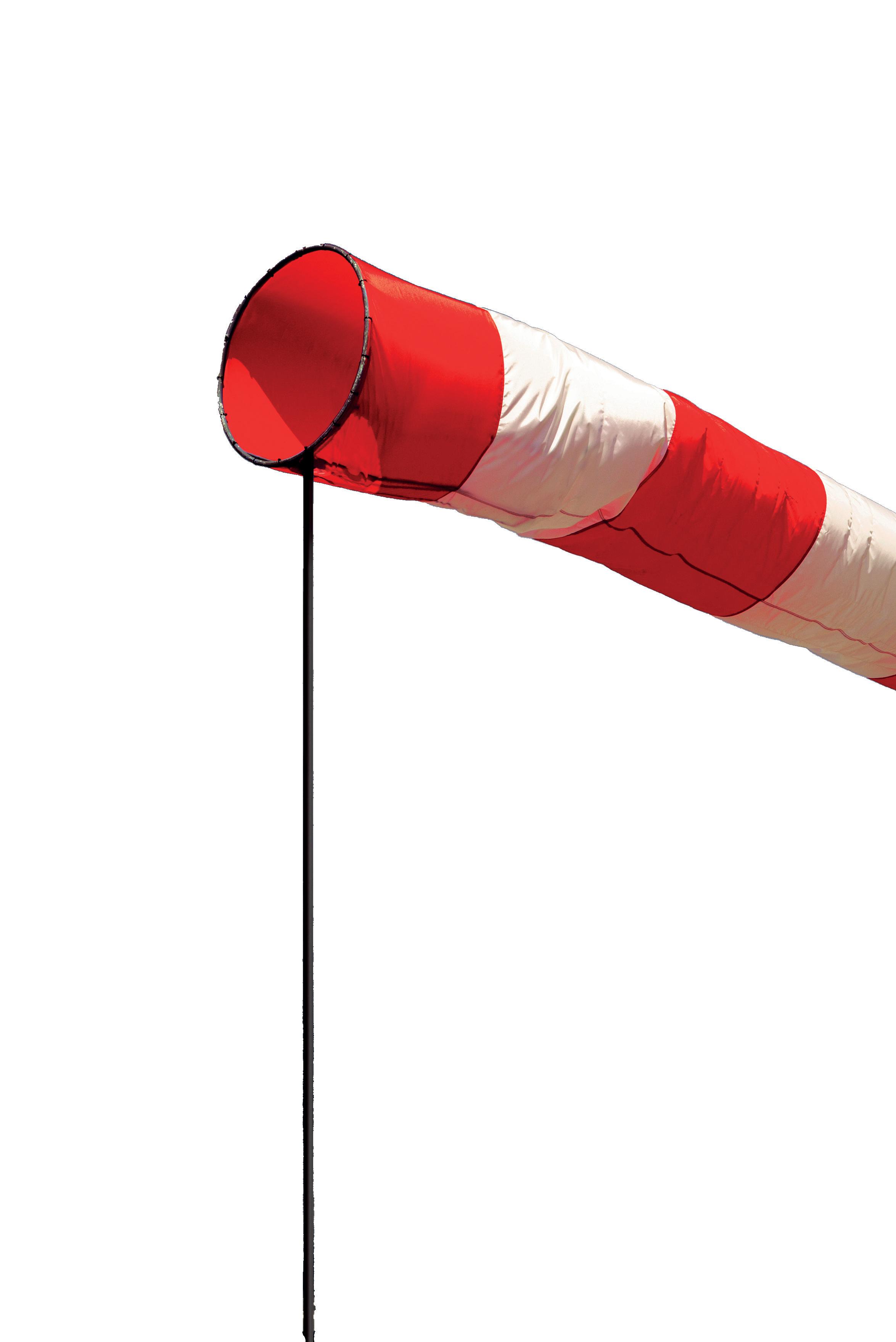


Improving forecast accuracy
One such ML system is DELFI (Deep Learning Forecast Improvement), developed by StormGeo and designed to enhance NWP forecasts by automatically correcting errors. This system applies various ML techniques, ranging from simple statistical models to deep neural networks,
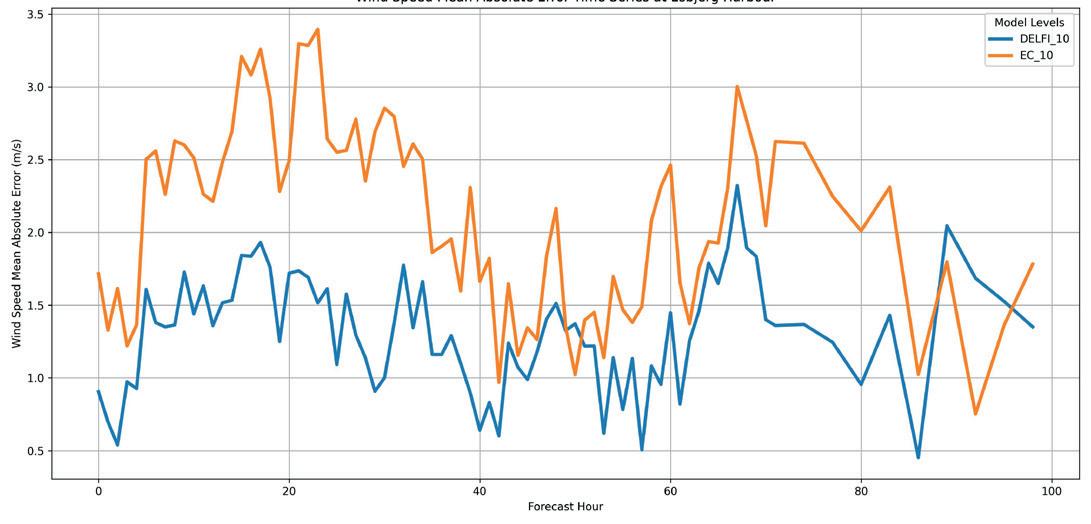
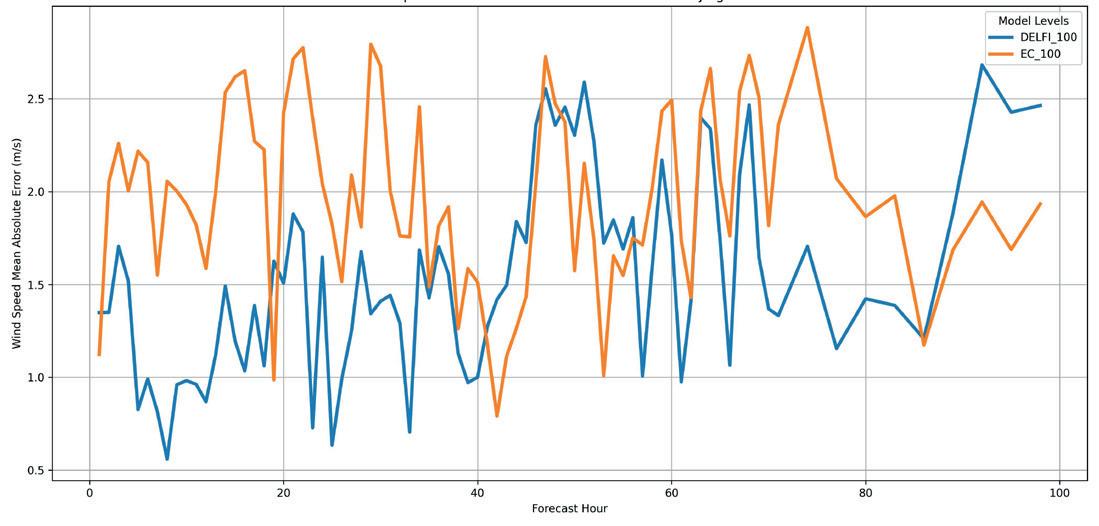

to identify and reduce forecast inaccuracies. Each week, DELFI evaluates multiple forecasting methods against real-world observations and selects the most accurate approach for the following week, continuously improving its accuracy over time.
Unlike traditional forecasting, which relies on meteorologists to recognise and compensate for model weaknesses, DELFI learns from past errors and minimises inaccuracies on its own. This results in a more precise starting point for forecasts. By providing a more reliable forecast baseline, DELFI helps meteorologists make faster, more informed decisions, ultimately improving overall forecast accuracy.
A case study
Recently, a new module was introduced to DELFI, allowing wind speed correction at different heights, not just at the standard 10 m height. This is achieved by correcting windspeeds individually at all observation heights. Then, based on these predictions, windspeeds at any level of interest are calculated.
This article presents a case study of this new setup. LIDAR-based wind observations at several different heights from the Esbjerg harbour site in Denmark are utilised to create corrected wind profile forecasts at heights of 10 m and 100 m. The results are then compared to the performance of the top global NWP model, the IFS model from the European Centre for Medium-Range Weather Forecasts (ECMWF).
The observation site
The case study site, Esbjerg, is Denmark’s largest port. In the past few decades, it has evolved into one of the world’s premier offshore wind hubs. Since supporting Denmark’s first large scale offshore wind farm, Horns Rev 1, in 2002, the Port of Esbjerg has been involved in over 60 offshore wind projects. The port’s strategic location and specialised infrastructure have been pivotal in advancing Europe’s renewable energy initiatives.
LIDAR technology for wind observations
The wind observations at this location employ LIDAR technology. These sensors work like radars, but use laser light instead of radio waves to measure wind speed at different heights. The LIDAR sends up pulses of laser light and, when this light encounters tiny obstacles like dust or water vapour in the atmosphere, it scatters. Some of the scattered light makes it back to the LIDAR device and, by analysing how the wavelength of the light changes (a phenomenon called the Doppler effect), the system calculates how fast the air is moving at different altitudes. This technique allows LIDAR sensors to create a detailed representation of how wind speed changes with height without needing a physical tower or sensors at multiple heights. Wind farms typically use LIDARs to measure wind conditions before installing turbines and to optimise power generation by adjusting turbine blades in real time.

Switzerland’s leading solar energy exhibition
16-17 September, 2025 | Messe Zürich


150+ speakers
will share cutting-edge insights, realworld case studies, and forwardthinking strategies shaping the future of solar energy in Switzerland.

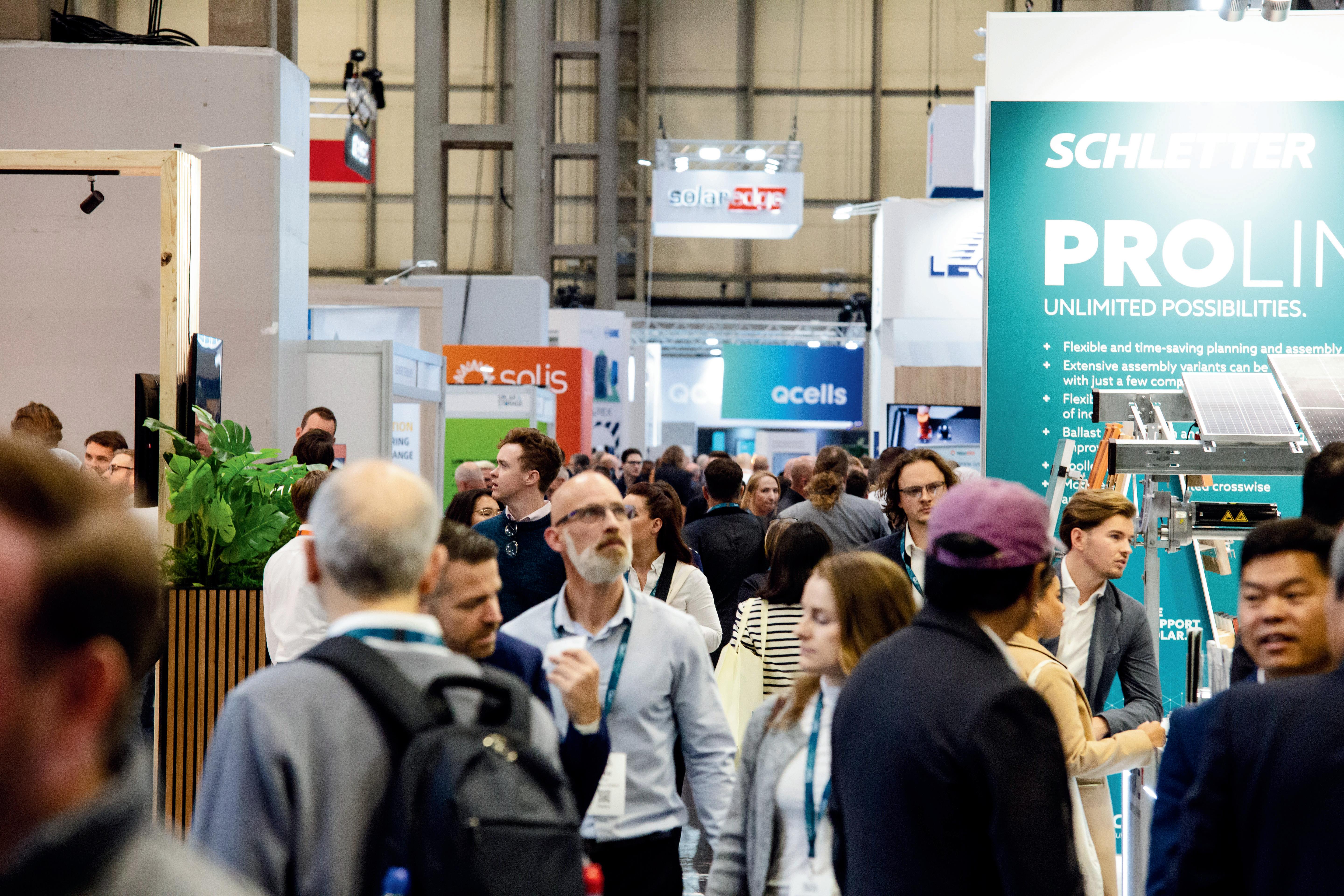
100+ exhibitors
will showcase the latest innovations in solar and energy storage products, technologies, and solutions.

Show Features :
Startup Zone
Meet the Installers
Networking events
Research poster zone
Register for your Free Ticket now
https://www.terrapinn.com/solarzurich/energyglobal
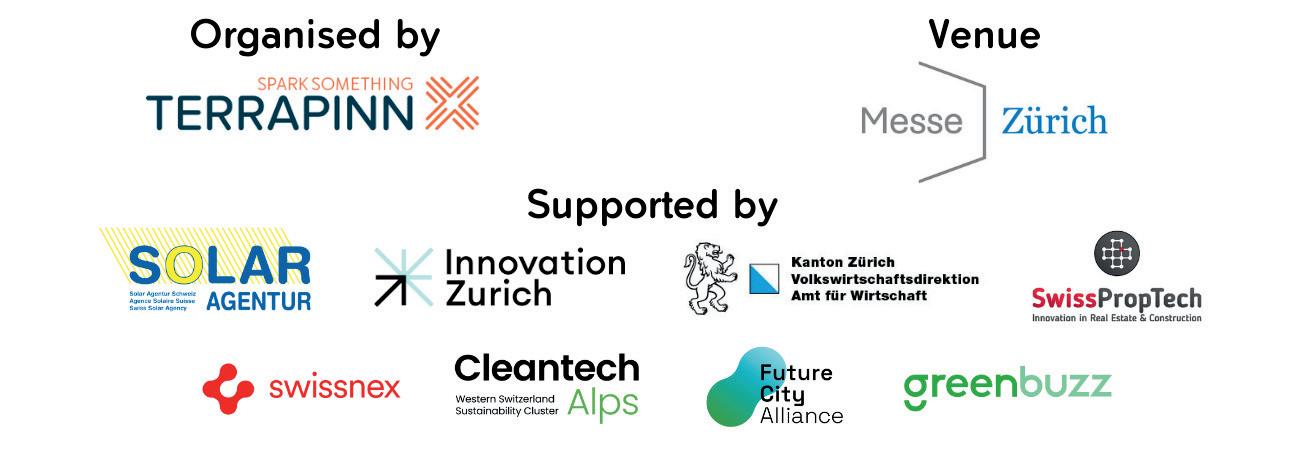
What the data tells us
To measure forecast accuracy, this case study uses mean absolute error (MAE), which tells how far off the predictions are from reality on average. The DELFI results presented in the figures come from the best-performing DELFI models selected using the MAE statistics.
Based on the time evolution of MAE at 10 m and 100 m heights (Figures 1 and 2), DELFI consistently outperforms ECMWF, particularly for shorter forecast horizons. At 10 m, DELFI shows lower MAE values across the forecast period, demonstrating the usefulness of the ML approach in capturing near-surface wind variations in the data. ECMWF model data shows greater fluctuations and higher errors, suggesting it struggles more with local scale wind variability at this height. At the 100 m level, both models exhibit a
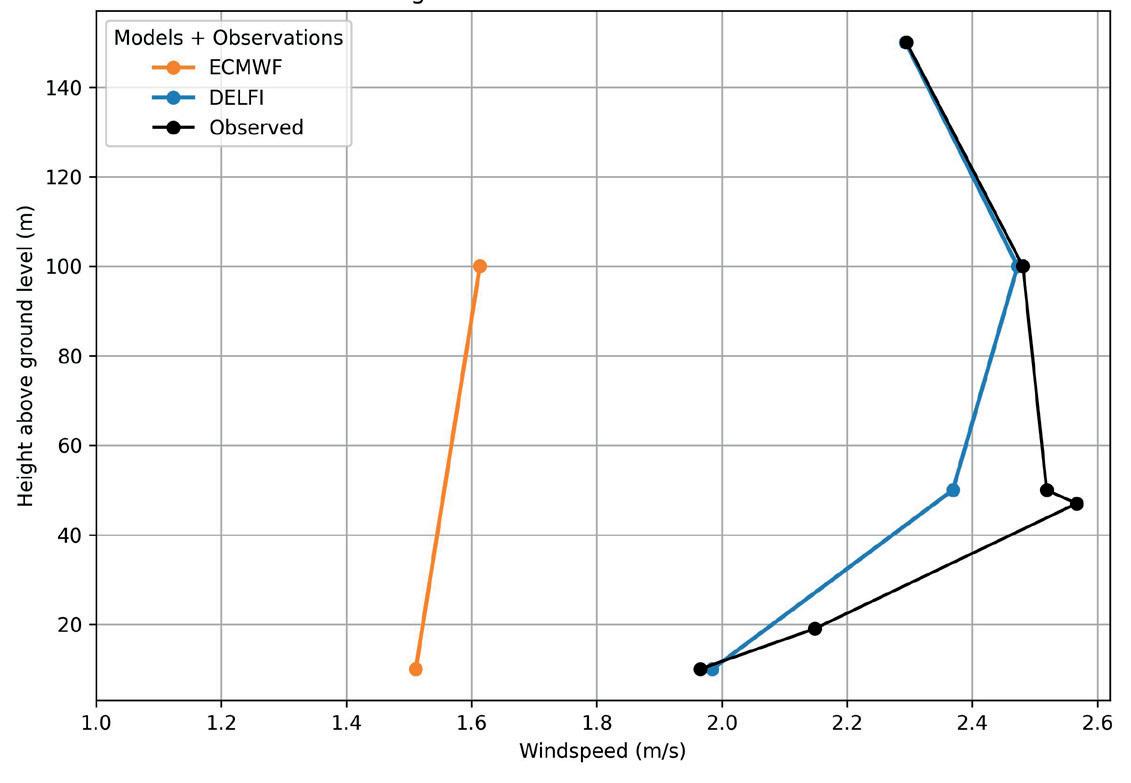

higher degree of variability with MAE. The ECMWF model data both under and over-estimates wind speed at times, which indicates the global model’s limitations in resolving boundary-layer processes. DELFI’s performance at 100 m suggests that ML techniques help refine forecast accuracy, particularly for wind speeds at turbine hub heights.
The MAE bar charts for 10 m and 100 m heights in Figure 3 summarise forecast performance over different forecast horizons. At 10 m, DELFI maintains significantly lower errors across all horizons, with a MAE of 1.2 m/sec. for 0 – 12 hours compared to 2.1 m/sec. for ECMWF. This pattern holds across longer forecast lead times where DELFI consistently provides better predictions.
At 100 m, a similar trend is observed. DELFI maintains an advantage across all forecast horizons, with MAE values remaining lower than those from ECMWF. However, as the forecast horizon increases, the gap between the two models narrows slightly, suggesting that DELFI’s learning process benefits most from shorter-term forecasts where ML corrections can be most effective.
Furthermore, two examples of vertical wind profile forecasts are provided. The first example, a 12-hour forecast in a light wind situation, displays the strength of DELFI in its ability to correct the underprediction of wind speed associated with the ECMWF and its success with the shape of the observed profile (Figure 4).
The profile example for a 48-hour forecast (Figure 5) provides insights into a situation with stronger winds in which ECMWF exhibits a significant overprediction. DELFI reduces this error by half at all levels while overpredicting by 1 – 2 m/sec.
Conclusions
This demonstrates the significant improvements ML can bring to wind speed forecasting at different heights. Traditional numerical weather prediction models, such as ECMWF’s IFS, struggle to capture fine scale wind variations in the ABL, particularly near the surface. By leveraging ML, DELFI can effectively reduce forecast errors and provide more accurate wind predictions at both 10 m and 100 m heights, particularly for shorter forecast horizons. Wind forecast comparisons further highlight DELFI’s ability to better match ground truth wind conditions, correcting underprediction in light wind situations or overestimation in stronger wind conditions.
These findings underscore the value of integrating ML with traditional forecasting approaches to enhance wind energy forecasting. More accurate wind predictions at key turbine heights allow wind farm operators to optimise energy production, reduce mechanical stress on turbines, and improve grid reliability. As ML models continue to evolve with more data and improved algorithms, they hold great promise for further advancements in wind energy forecasting, helping the industry move towards more efficient and sustainable operations.
RENEWING WHAT’S POSSIBLE
SEPTEMBER 8-11, 2025
LAS VEGAS, NV
Join conversations with industry buyers, suppliers, distributors, consultants, and more to explore solutions, exchange ideas, and discover new technologies
REGISTER NOW | re-plus.com
Renny Vandewege, General Manager, Weather and Climate Intelligence, DTN, details five ways weather intelligence helps renewable energy mitigate weather risks.
y its very nature, the renewable energy industry is highly weather-dependent for the generation of power. It is also highly dependent on protection from weather impacts. To address these risks, the industry is increasingly turning to advanced weather intelligence. This includes real-time weather data, long-term climate forecasts, and AI-powered analytics. Integrated data systems bring it all together. These tools

help strengthen infrastructure, protect personnel, and ensure reliable energy flow into the grid.
The impact of extreme weather on renewable energy
Extreme weather events can cause significant damage to renewable energy infrastructure. For instance, wind turbines are vulnerable to high winds that can cause
mechanical stress and damage to turbine blades. According to new research, this can happen in a relatively short amount of time. The Netherlands Organization for Applied Scientific Research study in 2025 found approximately one-third of leading-edge erosion on wind turbine blades happens within just 12 hours of the year when strong winds and intense rainfall coincide.
Hydroelectric plants are affected by intense droughts that reduce water availability, while heavy rainfall and flooding can damage dams and powerhouses. In addition, while solar generation is one of the fastest growing sources of energy, so are the weather risks to the photovoltaic panels. According to the

GCube Insurance Services, 70% of solar losses in the US over the last 10 years have occurred since 2017.
Extreme weather events like these, coupled with the global growth of renewable energies, are driving an increased interest in granular and reliable weather data, not just in short-term forecasts, but also long-range and anticipated energy output.
Here are five ways that weather intelligence can help renewable energy mitigate weather risks.
1. Keeping assets safe
Weather intelligence plays a crucial role in reducing maintenance downtime and managing risk in the energy sector. Since both
weather and risk are data-driven, layering weather information with operational planning significantly improves decision-making. Nearly every aspect of a weather forecast can be quantified, allowing site managers to set specific thresholds for risk. This enables real-time assessment of potential downtime across different parts of a project.
Hindcasting – analysing past weather patterns – also helps identify the most suitable times of year for routine maintenance or construction, reducing disruptions and improving efficiency. Accurate forecasting is vital for protecting equipment and personnel.
The growth of renewable energy farms, in size and output, brings new considerations to balancing maintenance and asset protection. Wind turbines and rotors are growing taller and larger across the globe. For instance, the GE Haliade-X turbines planned for the Dogger Bank wind farm off the UK coast have a hub height of around 150 m and a rotor diameter of 220 m – making the total height nearly 260 m, taller than the London Eye.
Weather intelligence with taller turbines becomes significantly more complex – and more critical – for safe and efficient operations. Taller turbines interact with atmospheric conditions at higher altitudes, which can differ substantially from those
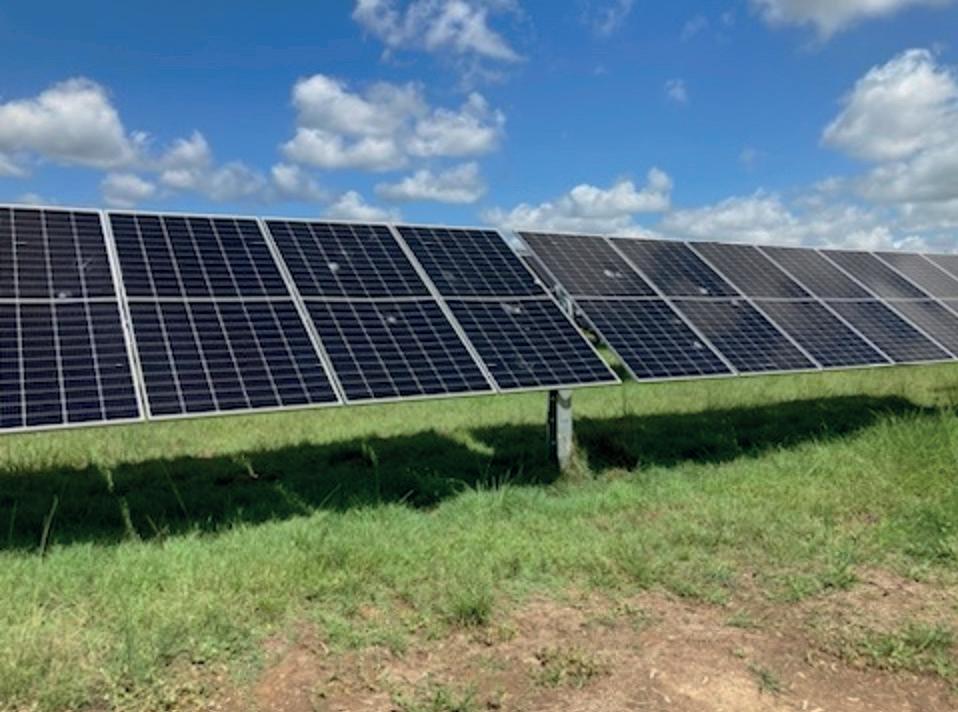

near the ground. This means standard surface-level weather forecasts are no longer sufficient; operators need high-resolution, multi-level weather data to understand conditions across the entire rotor sweep zone, which now spans over 200 m in many modern turbines.
At these heights, wind shear becomes more pronounced and can lead to uneven loading on blades. This asymmetry increases stress on the turbine structure and accelerates wear. Advanced weather intelligence helps identify shear zones, turbulence intensity, and directional shifts – allowing operators to fine-tune yaw and pitch controls for optimal performance and reduced fatigue.
2. Protecting crew
Weather intelligence is essential for ensuring crew safety in the renewable energy sector, where work environments often involve exposure to harsh and unpredictable elements. Whether operating on offshore wind platforms, remote solar farms, or mountainous hydroelectric sites, workers face significant risks from extreme weather conditions like high winds, lightning, icy surfaces, and intense heat.
Real-time weather data allows operations managers to make informed decisions about when it is safe for crews to work at height, perform maintenance, or transport equipment. For example, lightning detection systems can provide early warnings that prevent technicians from climbing wind turbines, while wind speed monitoring helps determine whether rope-access or drone inspections can proceed safely.
3. Maintaining a steady source of energy
Maintaining a steady flow of energy from nature is different from using a fuel source where there is more control, like coal or natural gas. With alternative energy, the goal for utility companies is to compensate for source fluctuations, rather than control the flow of the resource.
Many utilities depend on private weather companies that use an ensemble of weather models, statistical forecasting, and filtering techniques to gain keen insight into the amount of potential power.
Predicting winds for energy use poses a number of challenges. The geography around a wind farm can have a major influence on local wind speeds, so traditional weather-prediction models are less useful for accurate wind forecasts. Wind farms operate at peak efficiency when using hub-height wind forecasts at turbine-level to measure wind speed, direction, and gusts.
Weather intelligence plays a crucial role in helping solar farms maintain a steady and reliable source of energy by reducing the uncertainty associated with weather-driven variability. Through high-resolution forecasts of solar irradiance, operators can anticipate fluctuations in sunlight caused by cloud cover, storms, or atmospheric haze. This foresight allows them to better manage energy storage systems, discharging batteries when production dips and recharging when sunlight is abundant. It also enables more accurate power scheduling and grid balancing, helping utilities adjust demand-response strategies or activate backup generation to maintain grid stability.
4. Improve long-term strategic planning
While real-time data is crucial for immediate operational responses, long-term weather forecasting allows energy providers to build resilient infrastructure and plan for future climate conditions. Developers can analyse historical climate data to choose locations less prone to extreme weather. Engineers can build more durable solar panels and wind turbines to withstand severe conditions. Anticipating seasonal variations allows for better battery storage integration to provide backup power when renewable sources are disrupted.
For instance, in response to increasing heatwaves, Norway’s hydroelectric sector is using predictive weather analytics to optimise water storage in reservoirs, preventing drought-related power shortages. Hydroelectric plants can adjust water release strategies to maximise power generation while preventing overflows by monitoring snowmelt patterns and precipitation trends.
According to the International Energy Agency, incorporating climate projections into energy planning can reduce infrastructure vulnerability and improve the efficiency of renewable investments. For every US$1 invested in climate-resilient infrastructure, US$6 can be saved by mitigating damage and losses from climate-related events.
5. Reduce risk to reputation and profit
Weather intelligence is critical even before a renewable energy farm is developed. Solar farm developers will analyse the historical solar trends for multiple potential farm locations to pick the best location for development. The more accurate the wind measurements are for a proposed site, the more likely the wind farm is to deliver on its expected energy yield. Even small miscalculations can have long-term effects on the valuation of company stock and profitability.
Government regulations and utility standards also impact profit by specifying a small error variance from the predicted to the actual amount of energy supply and demand. If actual supply falls outside the variance, the utility company can face financial penalties, lose profitability, and have reputational damage. Some states in the US have legislation that penalise utilities for large outages, even when caused by weather events. For example, the February 2021 ice storm in Texas led to widespread blackouts, highlighting vulnerabilities in the state’s energy infrastructure. Regulatory agencies responded with penalties and new weatherisation requirements across all energy sectors to prevent future crises.
Future innovations in weather intelligence for renewable energy resilience
As climate change accelerates, the demand for more advanced weather intelligence solutions in renewable energy continues to grow.
Drones and satellite imaging will continue improving high-resolution, real-time weather intelligence that enhances renewable energy operations. Drones equipped with advanced sensors can monitor wind turbine performance, assess solar panel conditions, and detect potential damage from extreme weather events. Meanwhile, satellites from organisations such as the National Aeronautics and Space Administration and the
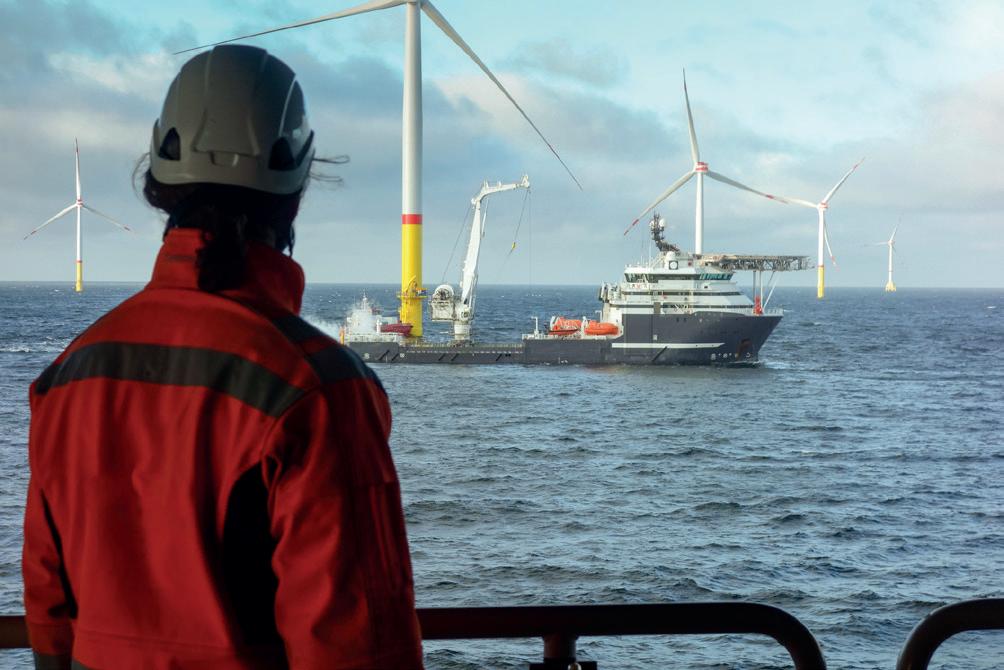
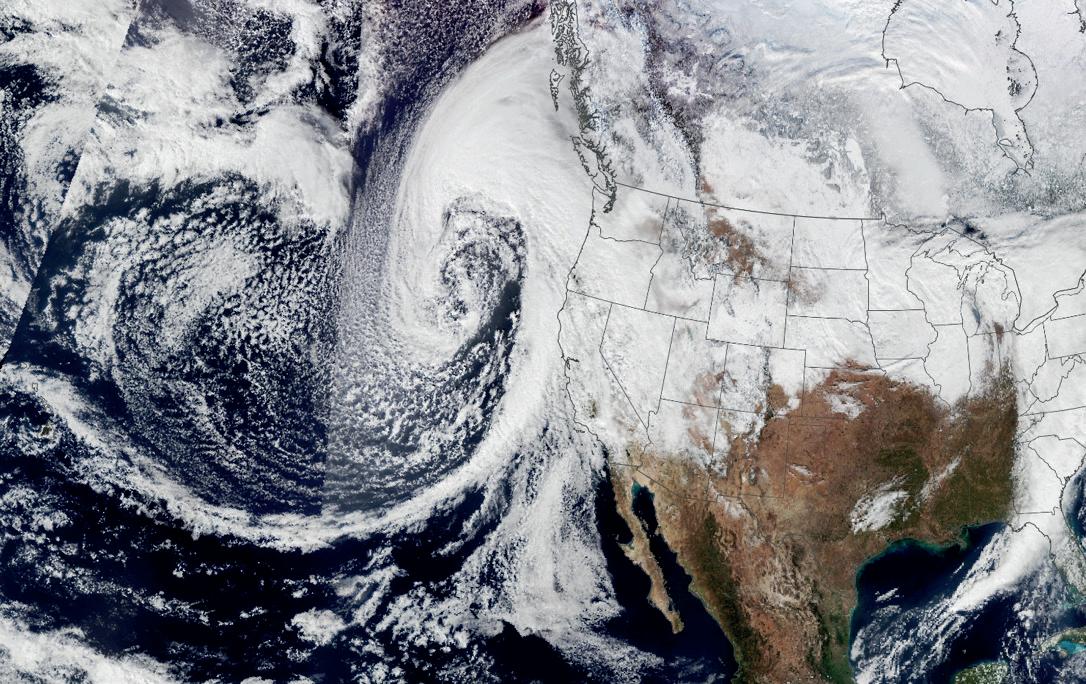
European Space Agency provide critical weather insights, including storm tracking, cloud cover analysis, and precipitation forecasts.
Artificial intelligence (AI) and machine learning are already driving advancements in hyperlocal forecasting, which provides detailed, site-specific, and even asset-specific, weather predictions. AI models are increasingly becoming more accurate at filling in data gaps where little to no weather data is available. Predictive analytics integrated with weather and operational data can help plan work schedules in advance, reducing last-minute exposure to dangerous conditions.
Quantum computing is set to revolutionise weather forecasting by processing massive datasets faster and more accurately than traditional computers. Quantum algorithms can analyse patterns more efficiently to provide faster updates to dynamic environmental conditions while reducing forecasting errors.
As technology evolves and climate risks intensify, the integration of advanced weather intelligence will be key to building a resilient and sustainable energy future. By leveraging weather intelligence to better plan for weather impacts, renewable energy providers are better positioned to mitigate risks to crew and assets while reliably maximising output.
Luke Bridgman, Ørsted, outlines some recent milestones for the world’s largest offshore wind farm: Hornsea 3.
he offshore wind sector is undergoing a significant transformation, and at the forefront stands Hornsea 3 – the world’s single largest wind farm currently under construction. With a planned capacity of 2.9 GW, this project is more than just another milestone for Ørsted; it represents a defining moment in the renewable energy transition. As part of the broader Hornsea Zone, Hornsea 3 is set to become one of the world’s largest renewable energy installations, surpassing its North Sea neighbour and sister project, Hornsea 2.
A legacy of innovation: From Vindeby to Hornsea 3
Located 120 km off the Norfolk coast, this £8.5 billion project will feature 197 turbines spanning nearly 700 km2 – an area larger than Greater Manchester. Once operational, it will generate enough electricity to power over 3.3 million UK homes, making it a cornerstone of the country’s net-zero ambitions. To fully appreciate the significance of Hornsea 3, one must look back at how far offshore wind has come.
More than 30 years ago, offshore wind was an untested concept. Vindeby, developed by Ørsted in Denmark in 1991 and the world’s first offshore wind farm, consisted of just 11 turbines generating a modest total output of 5 MW – enough to power 2200 homes.
At the time, the industry was in its infancy, but Vindeby crucially proved that offshore wind was viable.
Fast forward to today, and a single turbine at Hornsea 3 will easily surpass Vindeby’s total capacity. This progress highlights relentless advancements in turbine technology, engineering, and large scale project execution.
Yet, developing the world’s largest offshore wind farm is about more than just installing turbines – it requires the seamless integration of offshore and onshore infrastructure to deliver clean energy efficiently to the UK grid.


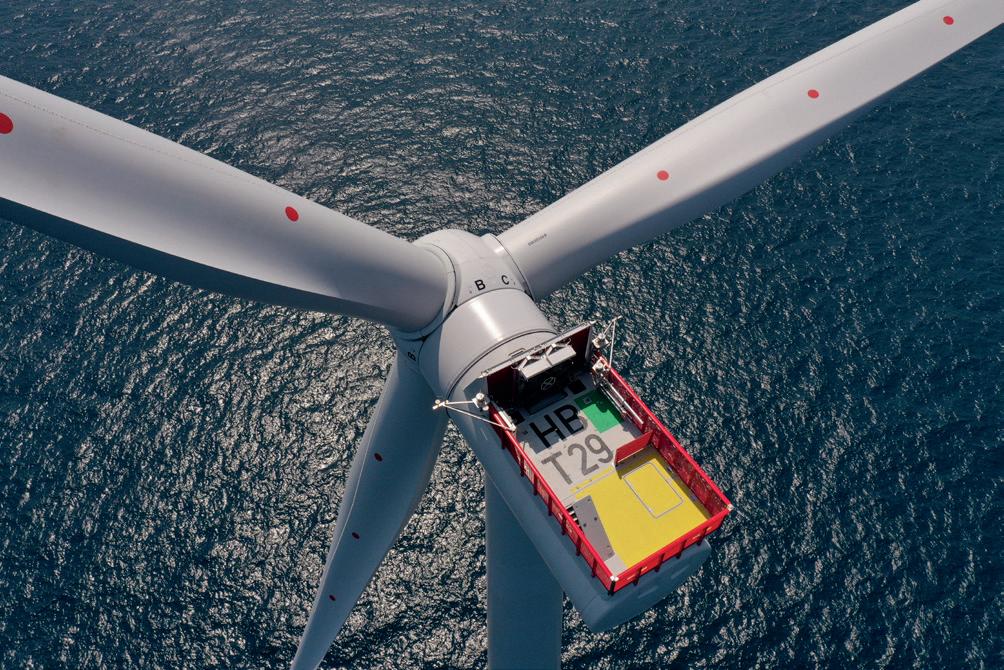
The backbone of Hornsea 3: Onshore infrastructure
When people think of offshore wind, they often picture vast arrays of turbines standing tall over the waves. However, what happens onshore is just as vital to a project’s success and is where the hard work begins – there are many moving parts to get right before offshore construction can start. The integration of large scale offshore wind farms requires sophisticated onshore infrastructure to ensure electricity reaches consumers efficiently and reliably.
Hornsea 3’s onshore infrastructure consists of several key components:
> Cable landfall: Subsea cables will make landfall near Weybourne, Norfolk, connecting to an underground onshore cable network.
> Onshore cable route: A carefully planned 55-km underground corridor through Norfolk, designed to minimise environmental impact and community disruption.
> Onshore converter stations: Two high-voltage direct current (HVDC) converter stations at Swardeston, south of Norwich, will convert power from HVDC to alternating current (AC) for efficient grid integration.
> Onshore substation: Also located near Swardeston, this facility will be where the electricity enters the National Grid.
The onshore phase of Hornsea 3 is well underway. Construction of the HVDC system began in 2022 and is progressing steadily. Steelwork and foundations for the converter stations are largely in place, and work on the HVDC valves will begin later in 2025. Meanwhile, trenching and tunnelling for the onshore cable route is advancing, with cables transported from Sweden via the Port of Boston in Lincolnshire. The logistics are complex – cables must be cut to manageable lengths and transported under police escort to the site.
At Weybourne in North Norfolk, where the export cable will make landfall, preparations for the horizontal directional drill (HDD) have nearly been completed – utilising a jack-up barge, stationed 600 m offshore, to facilitate work on the connection between onshore and offshore cables. By early 2026, subsea cables will be pulled through, establishing the crucial link between the wind farm and the grid.
Harnessing the power of HVDC technology
Given Hornsea 3’s considerable 120 km offshore distance, it will be Ørsted’s first UK project to use HVDC technology, which is more efficient for long-distance power transmission.
In partnership with Hitachi Energy and Aibel, Ørsted is installing four HVDC converter stations – two offshore and two onshore – to convert electricity between AC and DC. The HVDC system, in development since 2022, adds an extra layer of technical complexity to the project.
A global collaborative effort
Delivering a project of this magnitude requires a worldwide supply chain. Key components are being manufactured across multiple locations:
> Array cables: Manufactured in Italy and Greece.
> Export cables: Manufactured in Sweden.
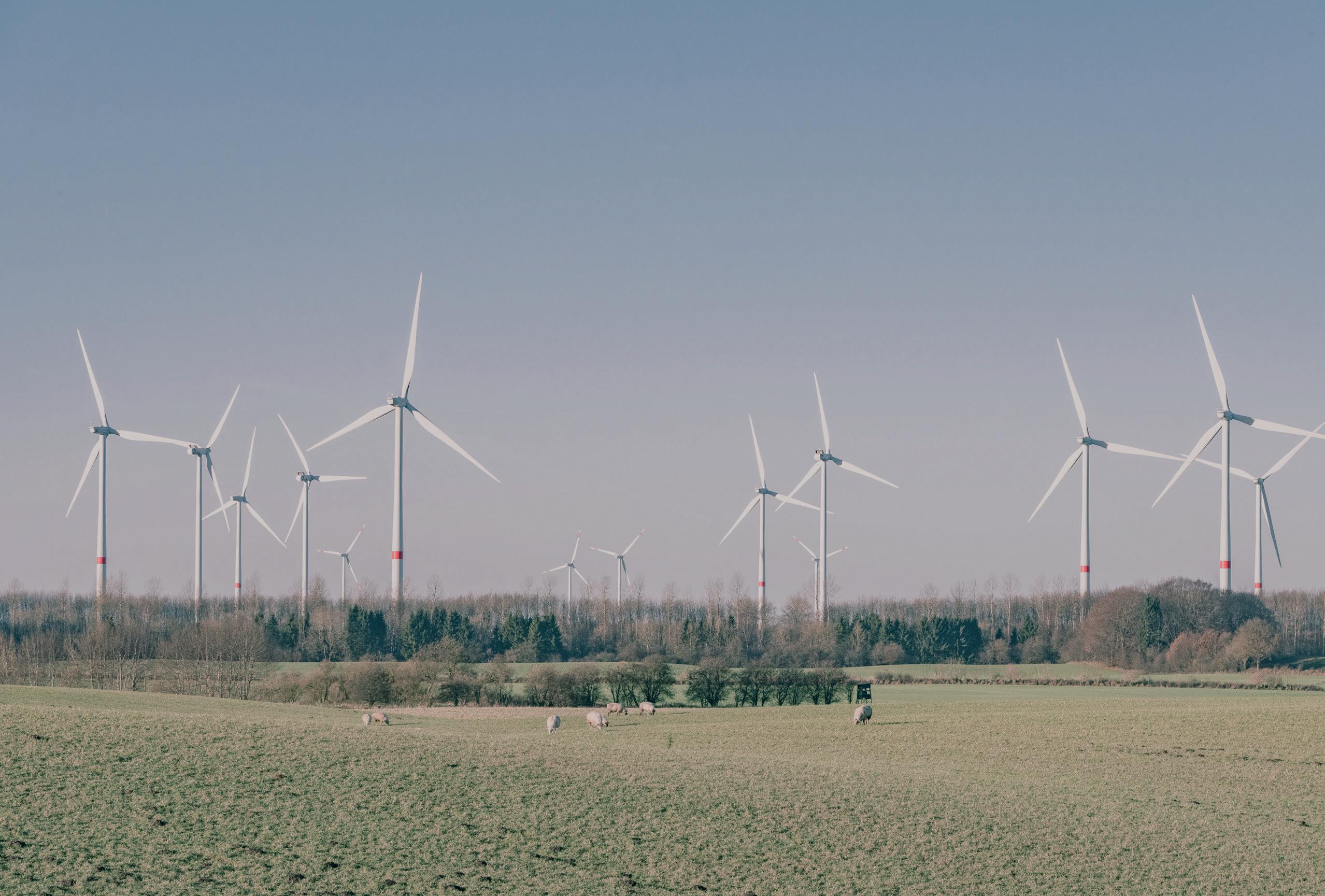

> HVDC platforms: Two massive HVDC topsides are under construction in Thailand, with the first about to set sail to Norway for final outfitting before installation in the UK in early 2026.
As well as drawing on international expertise, boosting domestic supply chains remains a priority for the government and Ørsted’s construction strategy reflects this commitment. North East England-based JDR won the array cable testing and termination contract. JDR will prepare and connect the cables between the turbines and offshore convertor stations.
Severfield, headquartered in York, is the largest steel fabricator in the UK, but this is their first contract on an offshore renewable energy project. Severfield will work with their strategic key contractor Hutchinson Engineering in Widnes.
Smulders is a leading steel fabricator in the offshore wind industry and, since 2016, has operated the UK-based facility in Wallsend (Newcastle). Together with Severfield, Smulders will supply a large proportion of secondary structures for Hornsea 3’s foundations from the UK. This includes the suspended internal platforms (SIPs), key internal parts of the foundations on which the wind turbines sit. In addition, the company will build the boat landings where smaller vessels will arrive, allowing technicians to directly access the turbine foundation. Work on Hornsea 3 will help support more than 300 jobs across the three UK firms.
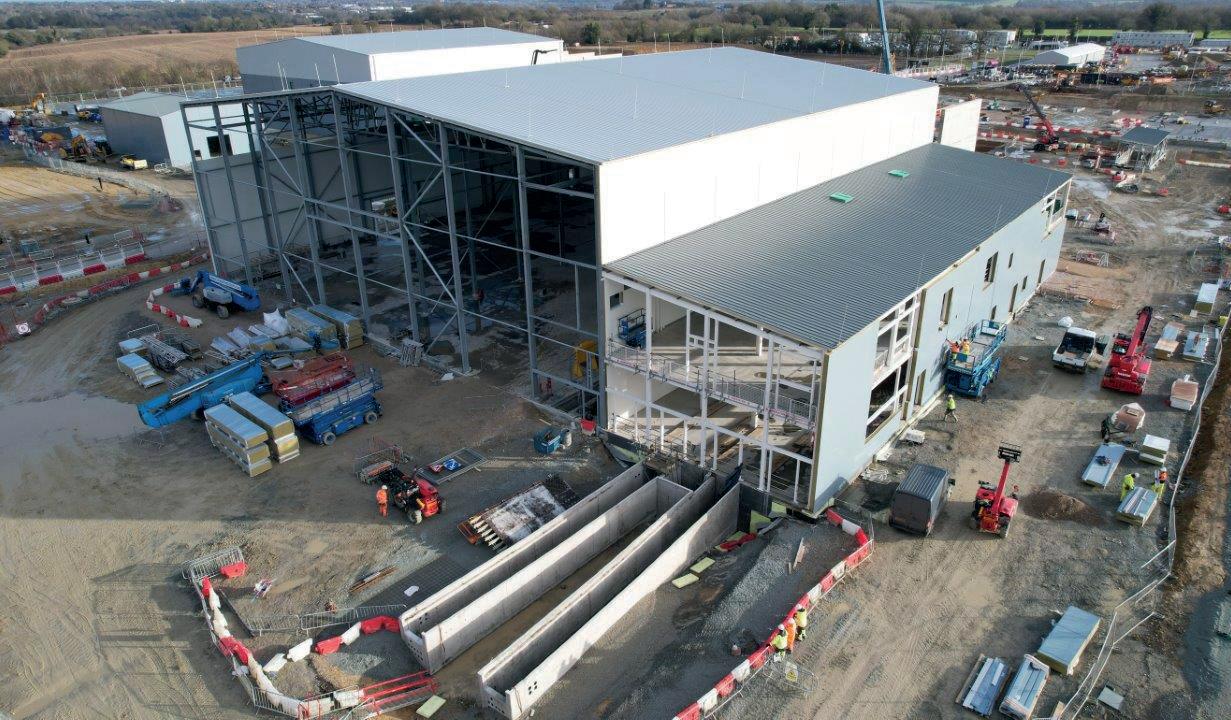
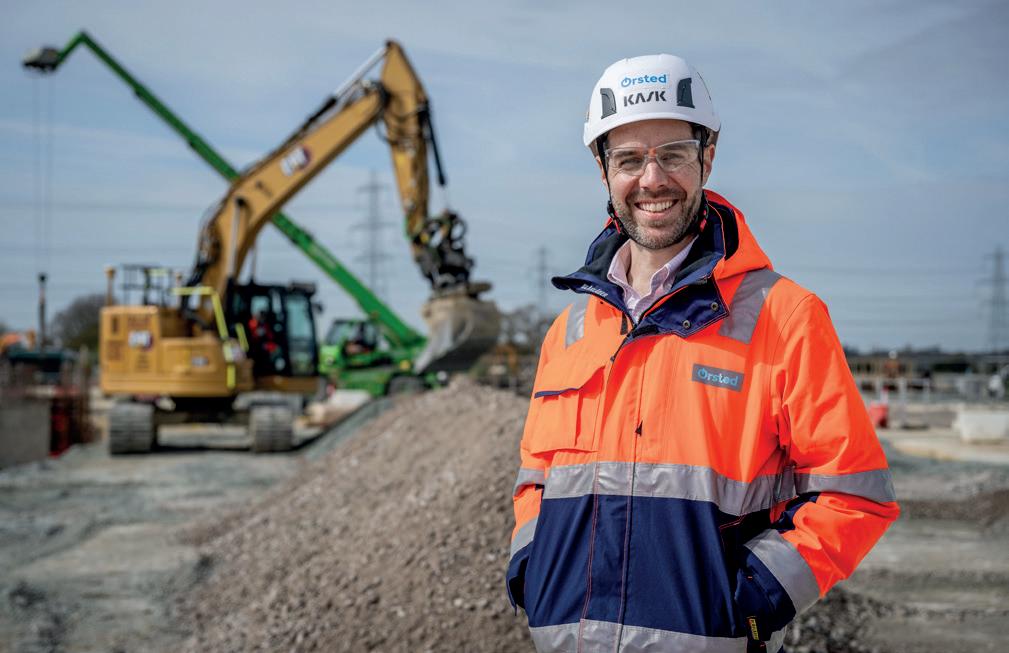
With offshore construction ramping up in 2026, the installation of export cables and monopiles will mark the final push towards completion. By the end of 2026, turbines will start arriving, and over the following 12 months, the wind farm will be fully erected and commissioned.
Executing a project of this scale demands a team of top industry experts. Hornsea 3 directly employs around 400 people, with thousands more engaged throughout the supply chain. At peak construction, over 5000 workers will be on site, and once operational, the wind farm will support around 1200 permanent jobs.
Shaping the future of offshore wind
As the UK transitions to a low-carbon economy, Hornsea 3 stands as a beacon of innovation and ambition. It represents the next generation of offshore wind farms – larger, smarter, and more integrated into the broader energy network. From pioneering HVDC transmission to cutting-edge turbine technology, it embodies the future of clean energy.
Ørsted’s mission at Hornsea is to build the world’s largest offshore wind farm – safer, leaner, and greener than ever before. With full commissioning expected by the end of 2027, Hornsea 3 is more than just an offshore wind farm – it is a bold statement about the future of energy.
Aligning with the UK government’s clean energy ambitions
As one of the largest offshore wind developments in history, the project aligns closely with national energy policies designed to phase out fossil fuels, enhance energy security, and reduce electricity costs.
It is clear the UK government recognises the role of offshore wind as the backbone of Britain’s energy mix – setting ambitious targets to expand offshore wind capacity to 50 GW by 2030. Hornsea 3 alone will contribute nearly 6% of the total offshore wind target. Alongside future projects such as Hornsea 4, it reinforces the UK’s position as a global leader in offshore wind energy.
However, a key challenge in deploying offshore wind at the scale and speed required will be ensuring efficient grid connections. The industry is already working with government, local, and national stakeholders to address these challenges. The government’s Offshore Transmission Network Review (OTNR) seeks to optimise the way offshore wind farms link to the national grid, and it is clear that battery storage has a role to play.
Work is also ongoing as the UK government seeks to streamline planning and permitting processes for new wind farms, therefore lessons learned from the successful execution of Hornsea 3 may well help provide a blueprint for future offshore wind projects.
Powering the future
The construction of Hornsea 3 stands as a defining moment in the UK’s renewable energy journey – showcasing the immense complexity, skill, and co-ordination required to build a project of this scale. As construction continues, it sets the stage for a cleaner, more secure energy future in the UK and beyond.
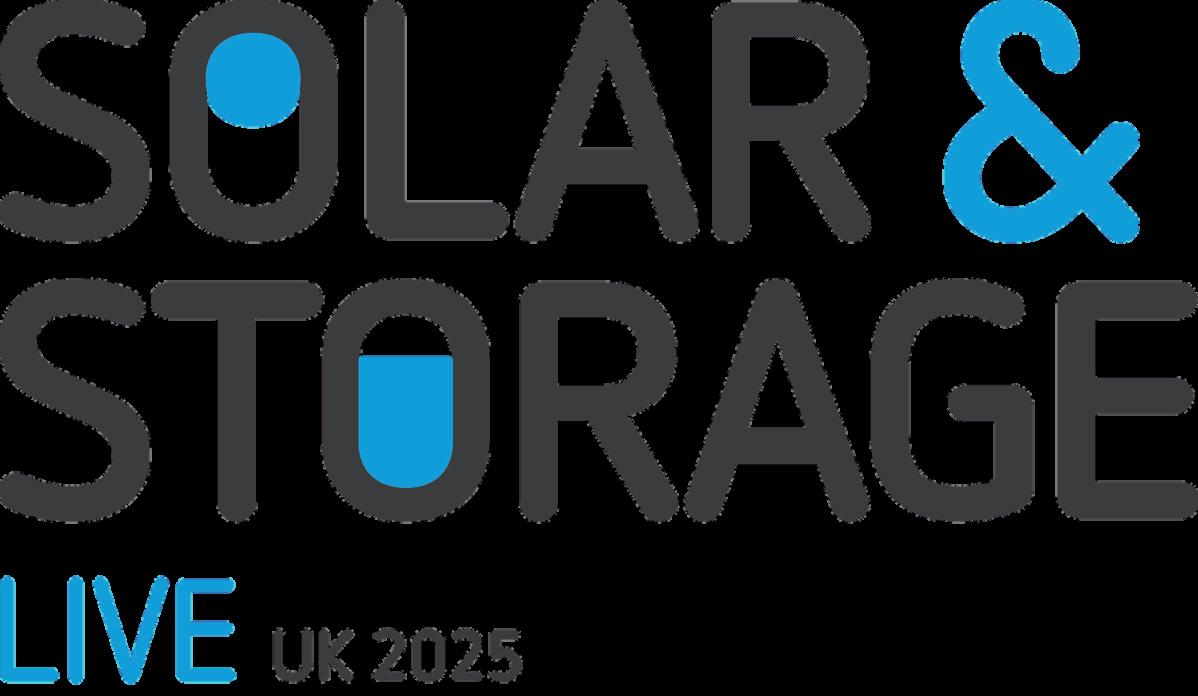
The NEC, Birmingham
The UK’s largest solar and energy storage exhibition
ENTER THE GROWING UK MARKET ENTER THE GROWING UK MARKET
Exhibit at the UK’s largest solar and energy storage exhibition to connect with buyers who are seeking solutions to deliver and optimise their solar and energy storage projects.
20,000+ buyers
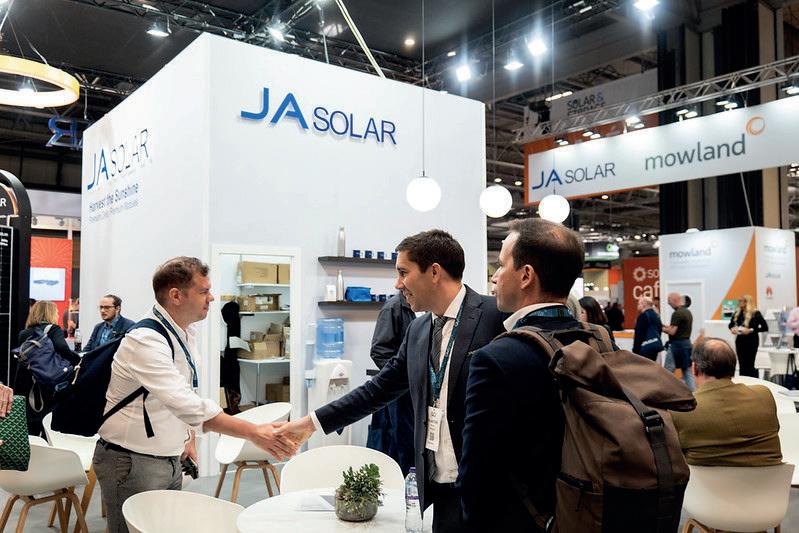
500+ global exhibitors
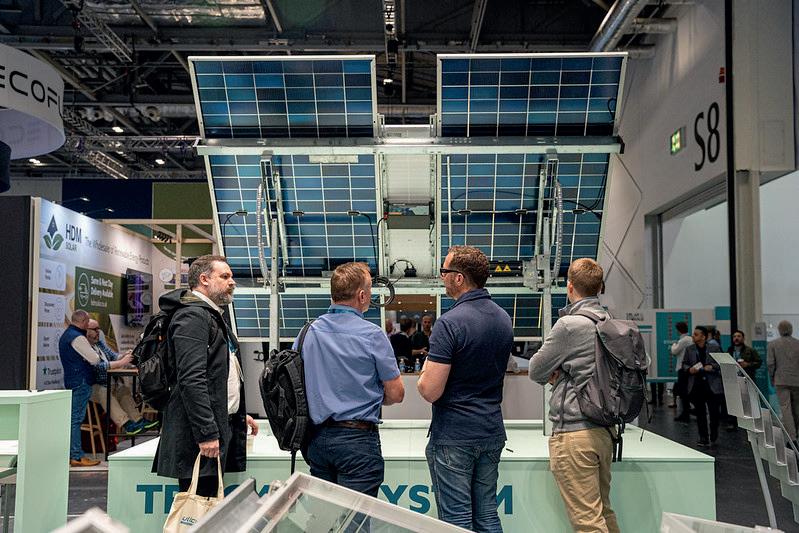
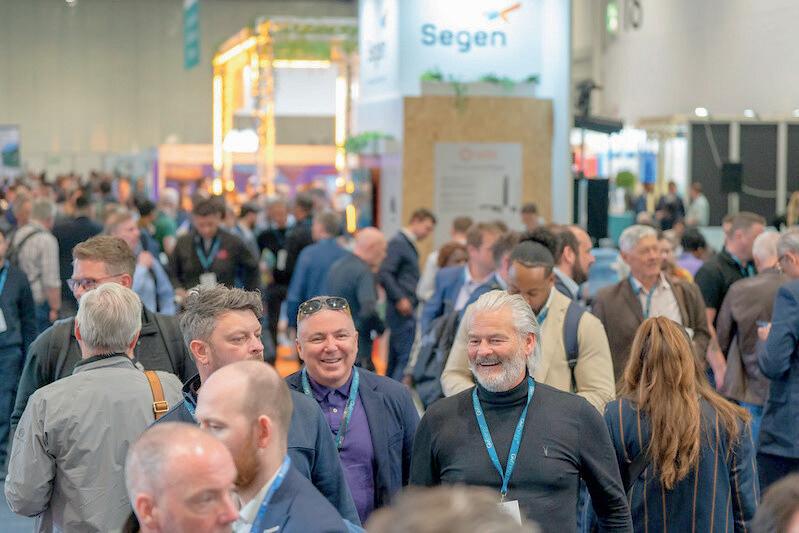
200+ speakers
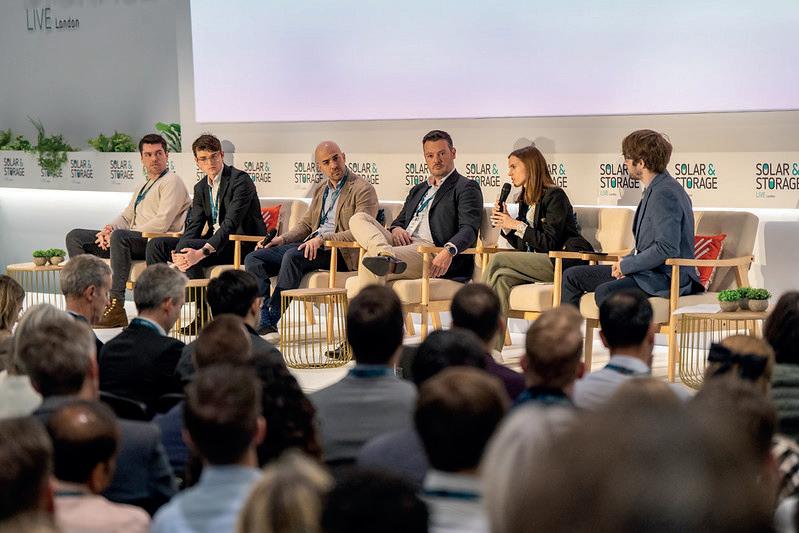
Scan the QR code or visit the event website for your exclusive opportunities



Stephane Allain, Director of Renewables, CRC Evans, champions the development of mechanised welding systems as a crucial tool in the ever-expanding UK offshore wind sector.
s net-zero targets approach, governments and businesses are turning to offshore wind energy as a renewable power source to meet the demand for clean energy.
Wind energy is well established in the UK, both onshore and offshore, and the sector continues to bring market developments in larger turbines and structures to improve
efficiency and increase capacity. The offshore wind industry is actively exploring new technologies and solutions. CRC Evans expects that commercial floating offshore wind farms will be deployed in the following few years and located further offshore in deeper waters.
Challenges in welding
The floating offshore wind sector currently faces two challenges: the need for more skilled welders and increased welding productivity. Both will be required to meet the sector’s demands in order to fabricate structures every few weeks. CRC Evans are addressing these industry needs by investing in product research and development and personnel. Over the years, the company has amassed extensive expertise in the oil and gas sector, including proficiency in offshore operations, complex project management, and infrastructure development. Experience, state-of-the-art technology, and an international reach allow the company to develop transferable skills that can be applied to support the emerging floating offshore wind sector.
Mechanised welding
With experience in mechanised welding, CRC Evans can apply lessons learned from the oil and gas and infrastructure industries to floating offshore wind. The company is developing and enhancing welding systems for the quayside fabrication of these massive floating offshore wind structures.
The floating offshore wind market is pushing for mechanised welding systems and the benefits that they can bring, which include:
> Increased productivity: Mechanised welding systems can operate faster and more continuously than manual welders. This leads to increased production rates and shorter project timelines, with the possibility of working 24 hours per day with minimal downtime.
> Consistency and quality: These systems can provide consistent and repeatable welds, reducing the risk of human error. This leads to higher-quality welds with fewer defects, reducing costly repairs and interruptions and improving completion schedules. A digital record of all parameters is logged for quality reports and integrity management.
> Reduced fatigue: Manual welding can be physically demanding leading to fatigue, which can affect the quality of work. Mechanised welding alleviates the physical strain on workers, leading to more consistent results over long periods.
> Better control over welding parameters: Mechanised welding offers precise control over welding parameters such as travel and wire speed, amperage, voltage, oscillation, and arc stability, ensuring optimal conditions for each weld.
> Reduced labour costs: Fewer skilled operators/welders are required on site.
Earlier this year, CRC Evans was awarded a grant from the Offshore Wind Growth Partnership (OWGP) to improve the company’s mechanised welding systems for the offshore wind sector, working closely with the OWGP on this project. The company’s research and development programme is making good progress in creating mechanised welding solutions specifically designed for the construction and assembly of large structures. After collaborating with designers and developers, there is a focus on enhancing welding productivity with the aim of achieving a 50% increase. The Floating Offshore Wind research and development programme is proceeding as planned and expected to be completed in 2Q25.
Fabrication demands
The second industry challenge is the need for welders to meet the fabrication demand. CRC Evans is committed to investing in developing and training skilled welders and continues to offer its well-established and comprehensive apprenticeship programme. Together, both initiatives will help ensure that the company is able to increase its welding team from 250 welders to 400 welders.
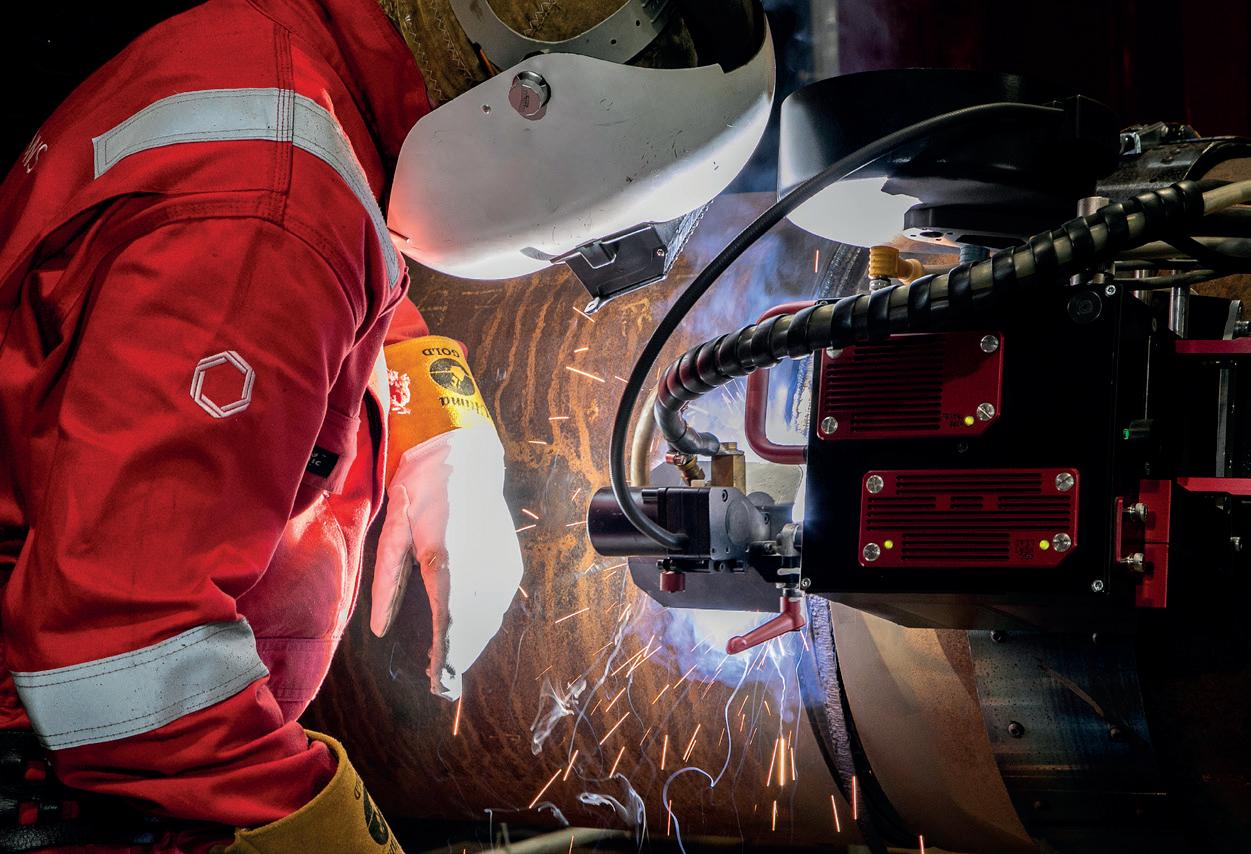
Conclusion
Skilled welding crews, along with proven mechanised and innovative welding systems, will enable the company to complete the final assembly of floating offshore wind structures. CRC Evans has extensive experience mobilising teams and equipment where the floating offshore wind project is located, whether in the North Sea, Celtic Sea, Brazil, the US, or Australia, for example. It is important that companies develop the resources and capabilities to meet future challenges in the assembly of floating offshore wind assets.






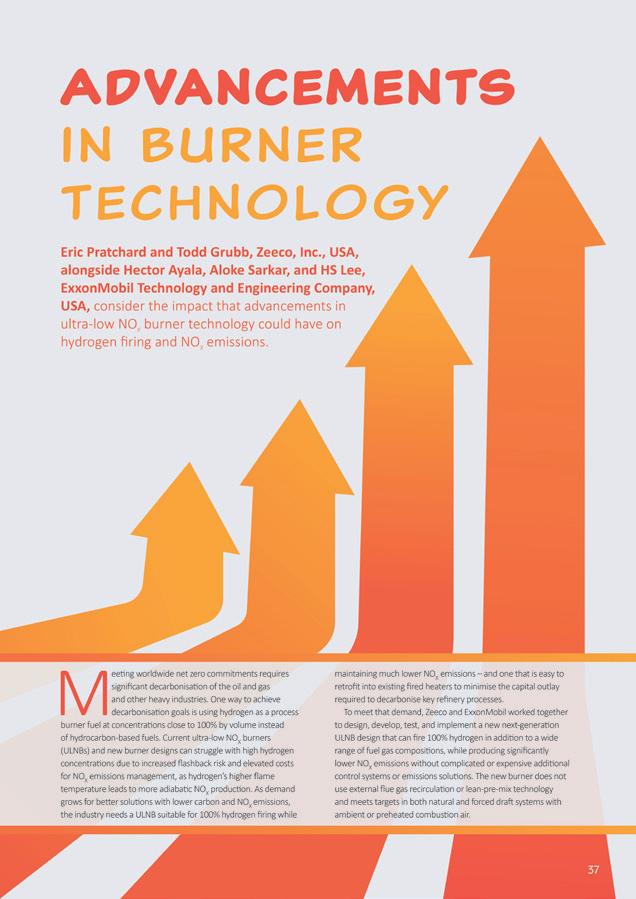



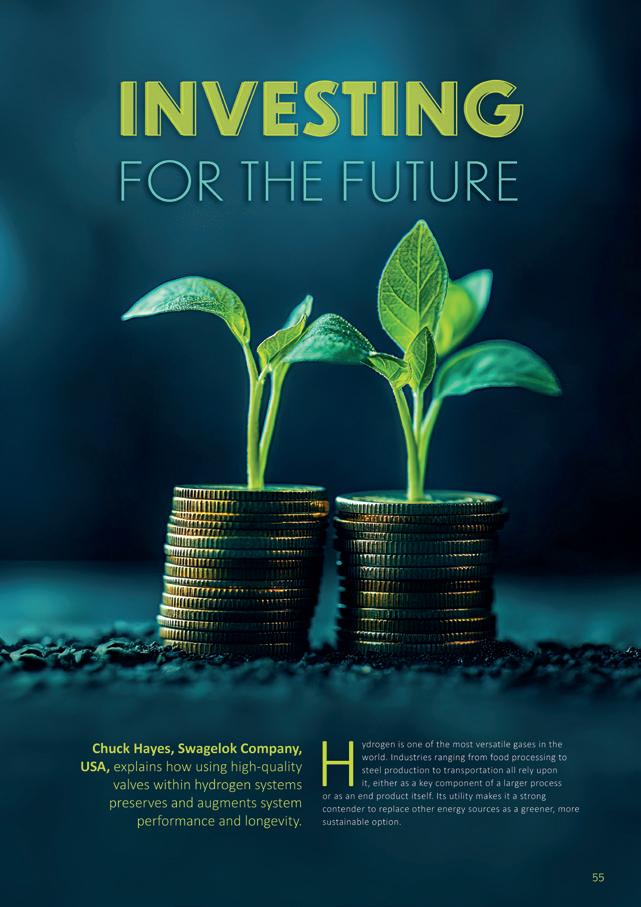




Francisco Siro, Head of Advisory at R&D consultancy, Sagentia Innovation, proposes that a blend of cross-sector learnings and novel approaches will help floating offshore wind achieve its potential.
loating offshore wind installations could play a critical role in the global energy transition, but significant challenges and obstacles remain. This subsector of offshore wind is still in its infancy, and scaling from demonstration projects to gigawatt scale developments involves a steep learning curve. Five key factors are hindering progress at present: technical issues, industrialisation and supply chain, operations and maintenance, end of life, and asset management. They all impact levelized cost of energy (LCOE), or the price at which energy must be sold for a system to break even at the end of its lifetime.
Technical issues
While publicly available reliability data for offshore wind is limited, there are well known technical issues that impact LCOE.

Several of these are exacerbated in floating applications. For instance, a common cause of failure in offshore wind relates to poor performance and reliability of subsea cables, often due to environmental factors. With floating platforms, oscillation is likely to compound these environmental challenges.
Erosion and delamination of turbine blades is another technical concern. As blades slice through the wind at high speed, fine particulates (e.g. dirt and dust carried in rain) impact their surface. Over time, these microscopic collisions, combined with centrifugal forces and dynamic loads from vibrations, cause erosion. Thin-walled components are also vulnerable to delamination caused by issues such as moisture ingress, temperature fluctuation, bonding failure, mechanical stress, and poor manufacturing quality.

Early main bearing failures in wind turbines are well documented too. The total cost of a wind turbine gearbox replacement varies depending on factors such as location, turbine type, and gearbox type. Nevertheless, it is invariably an expensive problem due to lost production, as well as the associated maintenance and component replacement costs. Mitigating these technical issues demands methodical consideration of materials and operating parameters coupled with robust analysis and testing.
In terms of subsea cables, it is advisable to design a key life test (KLT) encompassing all predicted oscillations caused by platform movement and marine currents. Boundary conditions should incorporate past and present information from multiple sources. It is also important to focus on quality assurance, from initial concept design to installation and commissioning. A process adapted from Advanced Product Quality Planning (APQP), widely used in the automotive industry, can be applied to ensure the final product has high repeatability. Non-destructive tests can also be applied at vital stages of manufacture, installation, and commissioning.
Mitigation strategies for blade erosion and delamination might involve the use of materials under development in other sectors (e.g. nanomaterials, self-healing materials, anti-erosion coatings, and bonding compounds). KLT evaluation of blades, aided by dynamic mechanical analysis (DMA) tools, is also useful to analyse legacy, current, and future patterns for critical parameters such as wind speed and direction, temperature, and humidity. This can be used to create a high-fidelity model to simulate boundary conditions over whole life.
Issues related to bearing failures might also be overcome with use of DMA tools. Incorporating DMA insights into design, testing, and validation processes enables the creation of high fidelity KLTs. Another approach to consider is bearing system designs, which enable rotation, ensuring wear occurs over the entire 360˚ circumference rather than just a small portion of it.
Industrialisation and supply chain
In 2023, the Global Wind Energy Council (GWEC) suggested that supply chain bottlenecks may impact wind power generation in every region of the world except China by the mid-2020s.

This, along with other factors, has created uncertainty, forcing developers to review project viability and in some cases halt development.
The GWEC calls for ‘partnership not protectionism’ in addressing supply chain issues: “By working together, the industry and governments can create an environment that fosters innovation, investment, and the development of a robust offshore wind supply chain. This approach is essential to meet the growing global demand for clean energy and could make a significant positive impact on both the energy transition and environmental goals.”
The development and implementation of processes which facilitate the mass production of components is one aspect of innovation that holds potential for floating offshore wind. At present, the supply chain is set up for low volumes, which must be urgently addressed to cope with future demand. Mass production techniques will also have a positive impact on component quality and consistency, as well as lowering costs.
For instance, the standardisation and modularisation of components facilitates repeatable, efficient construction. Simulation tools can also be used to aid the end-to-end process (manufacturing, transportation, logistics, assembly, and installation), detecting bottlenecks and identifying processes for automation such as welding, non-destructive testing, or additive manufacturing. It is also possible to discover ways to optimise installation and large component assembly.
At present, opportunities for standardisation in floating offshore wind are limited, partly due to variations in the concepts for floating foundations. Three methods have been adapted from oil and gas installations:
1. Spar-buoy: A plain or multi-catenary system, with free-hanging chain mooring lines or a combination of chains and ropes that connect the substructure to anchors.
2. Spar-submersible: A buoyant, semi-taut system using a combination of chains at the top and bottom with a rope mid-section on each line.
3. Tension leg platform: A taut system that uses rope lines connected under tension between substructure and anchors.
Floating offshore wind involves different loads and shallower conditions to floating offshore oil and gas applications, so there is still some uncertainty over which solution is most effective. The sooner this is resolved, the sooner component standardisation can begin.
Operations and maintenance
Industry figures suggest that operations and maintenance (O&M) accounts for up to 30% of the total life cost of fixed-bottom offshore wind farms, a figure that could be even higher for floating offshore wind. Longer distances to shore and more hazardous weather conditions make it harder to access assets. This is a complex matter with no simple solution. However, investing in strategies to minimise on-site human inspection and maintenance could go a long way towards keeping O&M costs within tolerance.
Autonomous and automated systems involving robotics and artificial intelligence (AI) and internet of things (IoT)
technologies hold great potential. Existing robotic and digital technologies could be harnessed and further developed as part of integrated risk management for floating offshore wind. For instance, deployment of unmanned aerial or underwater vehicles would enable visual inspection of blades or subsea equipment for erosion, corrosion, or other defects. Advanced visual and radar sensing technologies such as frequency modulated continuous wave (FMCW), combined with AI solutions can recognise patterns and identify emerging defects.
Harnessing tools such as digital twins for predictive modelling of degradation across the entire floating structure would support operational decision making and mapping of maintenance schedules. Advanced sensor technology is also integral to digital systems which support O&M decision making and to triggering automated interventions where and when necessary.
End of life
According to Offshore Renewable Energy Catapult’s
End-of-life planning in offshore wind report, more than 3.5 GW of global offshore wind capacity will reach the end of its operational life by 2035. Recently, end of life outcomes and processes for turbine blades have faced particular scrutiny, especially their disposal in landfill sites.
This raises the question of what decommissioning will look like for new floating offshore wind installations. Decommissioning is an intricate process requiring specialised deconstruction as well as strict compliance with environmental protection and waste disposal protocols. Operators are obliged to dismantle all components and restore the seabed to its original condition. In terms of turbine blades, several strategies can be harnessed to reduce negative environmental impacts. One example is to scale up the recycling and re-use of composite materials, for instance, in boat applications. Measures like this will be essential to meet the industry commitment to halt landfill disposal of blades. Holistic lifecycle assessment for recyclability also has a role to play, encouraging the reduction and re-use of waste during manufacture and the utilisation of recycled material from other sectors. A ‘sustainable by design’ mindset is important too, potentially leveraging self-healing nanomaterials and alternatives to carbon fibres.
Asset management
Ineffective asset management risks exacerbating many of the financial challenges of floating offshore wind production. Improving risk management by closely tracking asset performance, CAPEX and OPEX can resolve this, making it easier to monitor, and therefore manage, overall LCOE. Spotting early signs of deviation from the initial investment hypothesis enables corrective action to be triggered in good time.
Effective asset management is a multilevel process that relies on holistic collaboration between different stakeholders, creating opportunities to drive down overall LCOE without eroding stakeholder profits. For instance, a dynamic lifecycle cost model incorporates all costs incurred during the life of the asset. It must be regularly updated, incorporating relevant new information.
In addition, reliability growth plans for different systems/assets (e.g. turbine, mooring, cables) can feed the
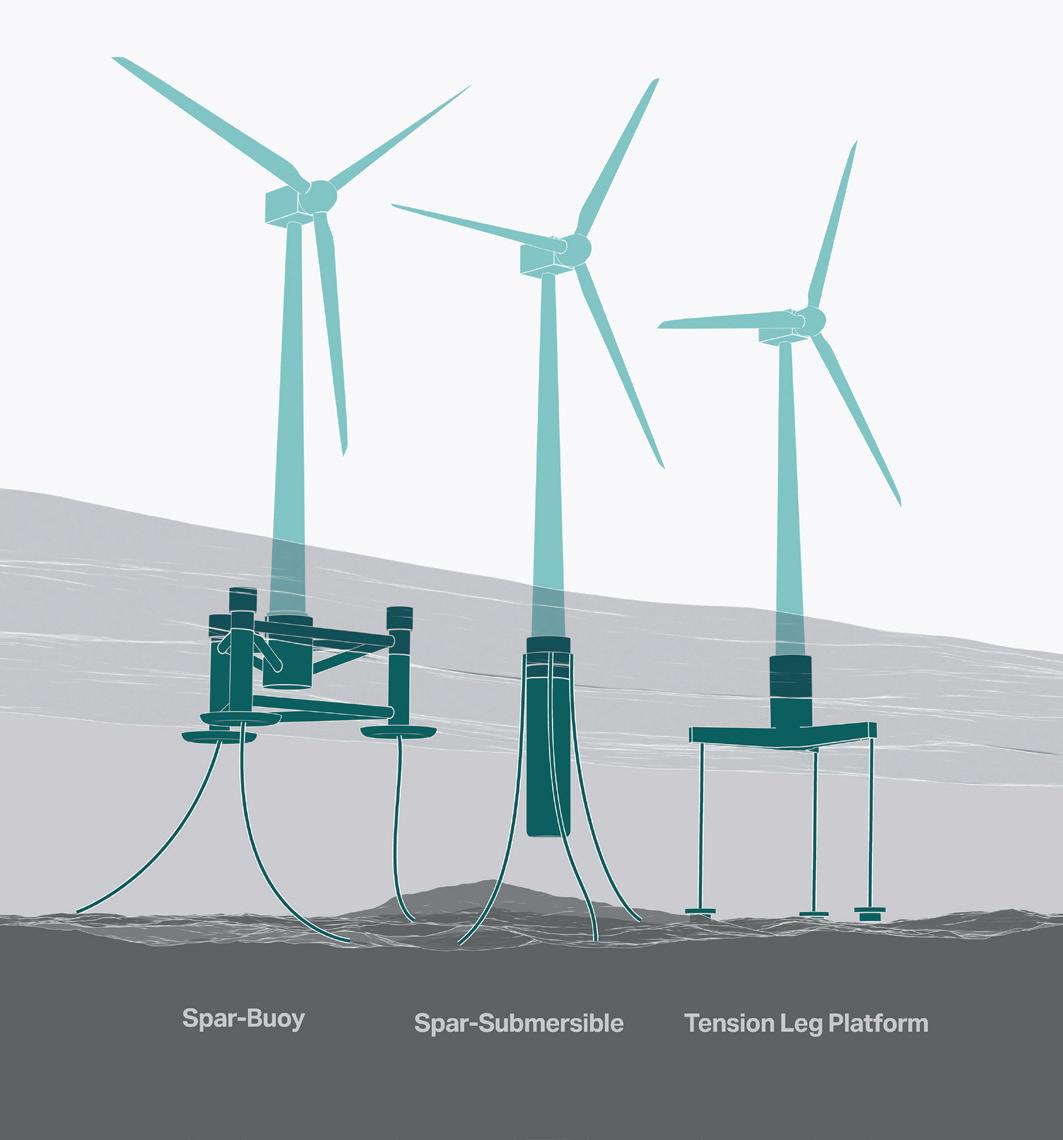
lifecycle cost model, covering whole life, from commissioning to decommissioning. These should dynamically incorporate information from multiple internal sources, such as supervisory control and data acquisition, condition monitoring systems, and enterprise asset management (EAM) systems. Ideally, external information from similar assets should be incorporated too.
An asset management plan, traditionally known as the maintenance plan, encompasses regular maintenance and overhaul activities, whether planned or condition-based, as well as equipment refresh needs. It is closely connected to the reliability growth plan, lifecycle cost model, and the EAM system, which should automatically reflect any updates to recalculate costs and potential downtime alongside updating working orders and material planning for planned maintenance activities.
Finally, an EAM system contains all information related to procurement/materials management, work management, and contract management. It facilitates better control of the inventory, vendor contracts, and work orders, maintaining traceability of different components and systems while identifying normal and abnormal parts usage patterns.
Accelerating the maturation of floating offshore wind
Bridging the gap between demonstration and development to unlock the full potential of floating offshore wind is not easy. While high levels of growth are forecast for the broader offshore wind sector, the floating subcategory is still regarded as an emerging segment. Cumulative benefits of addressing key aspects of the five main limiting factors could accelerate its maturation, aiding the transition to viable, large scale solutions. Companies that leverage the necessary skills and capabilities stand to reap significant rewards.

In a Q&A with Jessica Casey, Editor of Energy Global, Robin Saunders, Concept Naval Architect, Chartwell Marine, highlights how new designs of daughter crafts can help meet the rapidly growing demand for offshore wind vessels in Europe and Asia Pacific.
With the demand for offshore wind vessels growing alongside turbine technology and wind farm size, offshore wind vessels can create operational and supply chain efficiencies for the offshore wind industry. Jessica Casey (JC), Editor of Energy Global, spoke to Robin Saunders (RS), Concept Naval Architect, Chartwell Marine, to show how a new breed of vessels could help fulfil up to one-quarter of offshore wind crew transfer vessel (CTV) demand by 2050.
JC
Offshore wind relies on specialist vessels to fulfil demanding operational requirements – what are the main challenges in

scaling up deployment, especially as projects move further from shore?
RS
According to the Global Offshore Wind Report 2024, total offshore wind capacity is projected to reach 487 GW by 2033 and up to 2000 GW by 2050. In response, offshore wind farms are growing in scale and complexity, with new projects moving into deeper waters further from shore. This shift has created several specific operational challenges – namely, the need for a robust fleet of specialised vessels capable of safely transporting technicians, equipment, and supplies across greater distances in more demanding sea conditions.
Traditionally, the offshore wind sector has relied on service operation vessels (SOVs), which serve as offshore hubs for maintenance crews, complemented by increasingly capable CTVs that ferry personnel and equipment to and from shore or between turbines. While both vessel types have evolved to meet rising performance demands, the industry’s ‘bigger is better’ approach to vessel procurement has placed significant pressure on an already stretched global shipbuilding industry.
The growing demand for capable boats has led to longer lead times, cost pressures, and overstretched shipyards – creating significant bottlenecks. Offshore wind cannot scale without a strong supply chain, and the market must adopt new and innovative strategies to plug the vessel gap.
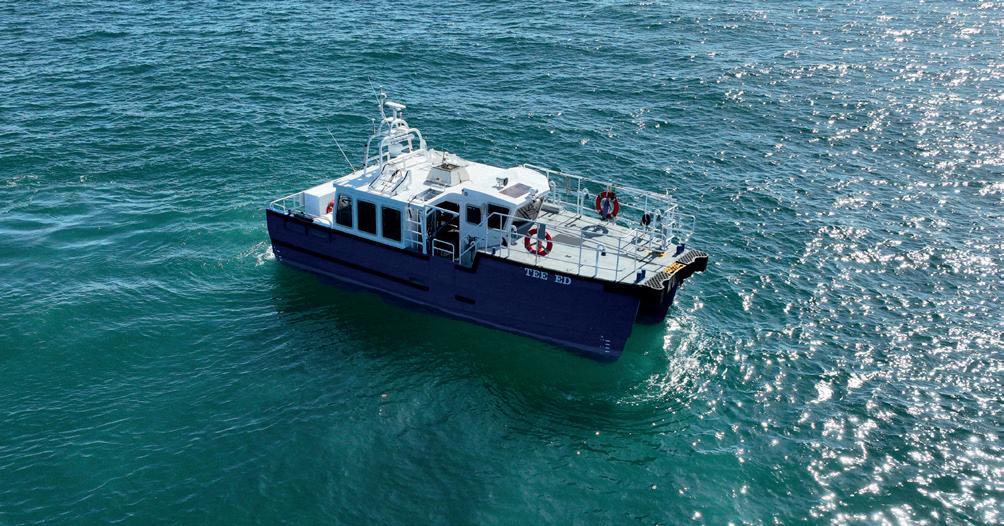
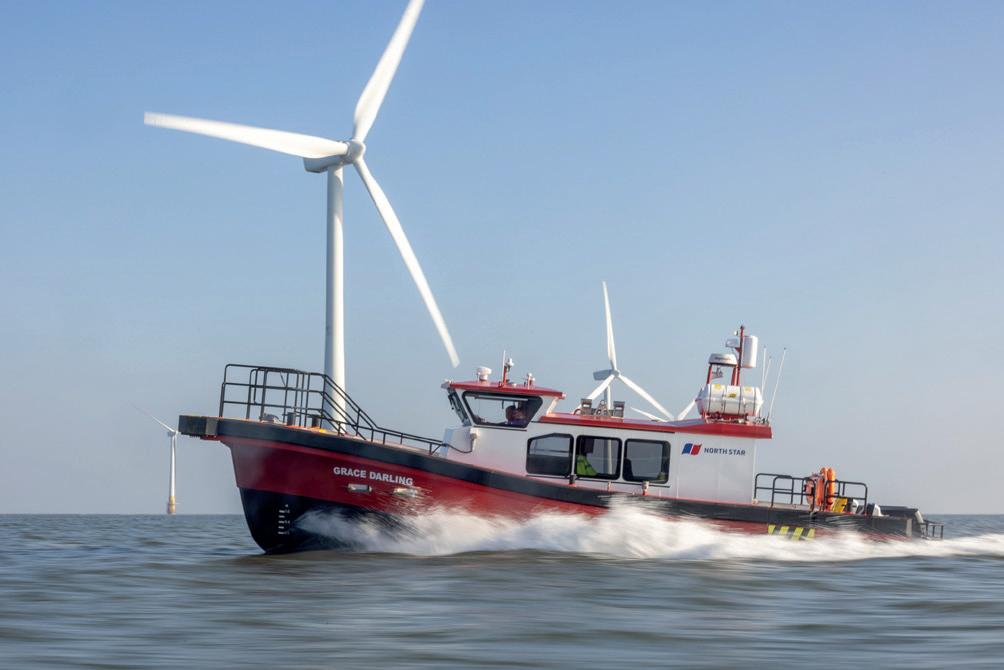
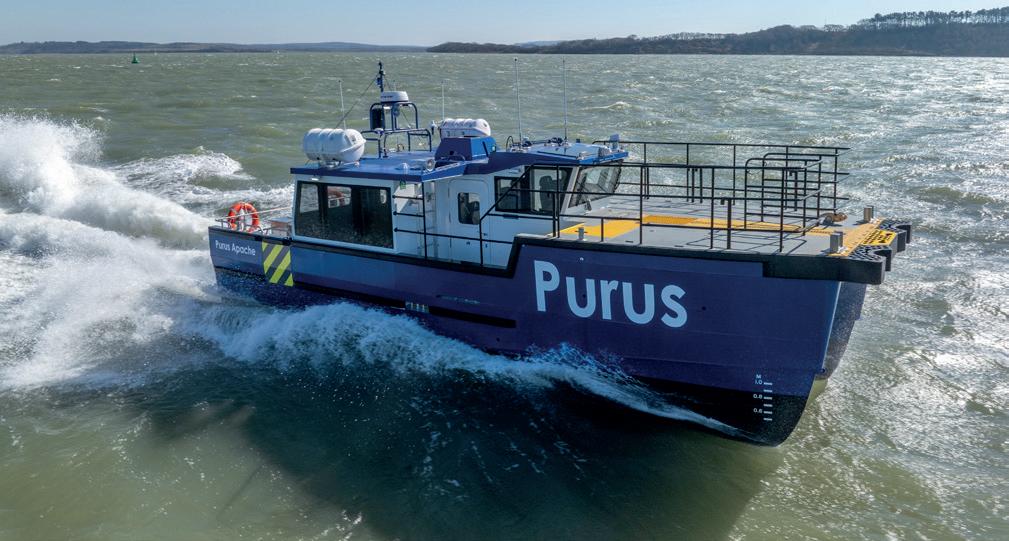
JC
The industry has traditionally focused on larger vessels, so what’s driving the shift towards smaller, more versatile vessels?
RS
While SOVs and CTVs will remain the backbone of offshore wind operations, the industry’s focus on scaling up has delivered powerful, high-capacity vessels with multi-role capabilities. However, such vessels come with high costs to build and operate, and their large size can limit manoeuvrability near turbines and restrict operations under certain sea conditions.
With vessel order books now stretched and global demand for offshore support services rising sharply, attention is turning to more agile, cost-efficient alternatives. Smaller vessels offer an attractive solution, particularly when deployed to complement SOVs and CTVs. Daughter craft – compact vessels launched from larger ‘mother ships’ – are increasingly recognised as a means of improving operational flexibility without incurring the high costs or lead times of larger vessels.
The market has largely overlooked the daughter craft vessel class to date, but with space for up to two daughter craft aboard each SOV, there is a huge opportunity to maximise their potential.
A new breed of next-generation daughter craft is set to become an integral part of offshore wind fleets – supporting the global expansion of offshore wind. Several drivers are accelerating this shift towards smaller, more versatile vessels:
1. Speed and scalability: The rising cost and complexity of building and operating large vessels is prompting developers and operators to explore faster, more affordable alternatives. Daughter craft offer an agile solution that can be deployed quickly and cost-effectively.
2. Tactical deployment: Daughter craft can be launched directly from an SOV to perform various tasks, from personnel transfers and inspections to emergency response, reducing the need for additional vessels to make lengthy round trips to shore.
3. Operational benefits: Instead of relying solely on large vessels that can only service one turbine at a time, integrating daughter craft into the fleet increases the number of turbines that can be accessed simultaneously, accelerating project timelines and reducing downtime.
JC
How do next generation daughter craft differ?
RS
Daughter craft have been in use for centuries. They are considered any smaller vessel deployed to a larger one, supporting tasks such as personnel transfer, search and rescue, anchor handling, and research and exploration operators. Since the 1950s, they have been extensively used in the oil and gas industry as fast response operations. Rigid inflatable boats (Ribs) are commonly used as daughter craft; however, these vessels can only operate on limited conditions and cannot perform tasks that are crucial on offshore wind operations.

Subscribe online at: www.energyglobal.com/magazine
Conventional daughter craft are unable to perform at a level that is suitable or acceptable for offshore operations – particularly considering the technically demanding requirement to ‘push on’ to access turbines or complete complex maintenance work. As a result, most logistical support activity has continued to be undertaken by more powerful high-performance CTVs, which is becoming less feasible due to the increased cost and difficulties of undertaking offshore and maintenance (O&M) activity further away from shore.
This has created a growing need to develop a next generation of daughter craft that can provide safe ‘push-on’ transfers, while maintaining the ability to be launched and recovered from SOVs.
These enhanced vessels are designed to bring some of the core strengths of traditional CTVs into a smaller vessel – or compact CTV – that directly complements the activities of SOVs and CTVs on site. Key differentiators include:
> High-performance hull forms designed using computational fluid dynamics (CFD) and validated in marine test tanks, enabling stable operation in sea states exceeding 1.5 m significant wave height.
> Push-on fendering systems that facilitate direct turbine access, enabling technicians to board safely in higher wave conditions, something previously only possible with larger CTVs.
> Bi-fuel hybrid propulsion that reduces emissions during transit and supports zero-emission loitering.
> Enhanced crew comfort with improved thermal and sound insulation, comfortable suspension seating, and large windows that create a light environment and increase visibility.
> Modular design options, including monohull and catamaran formats, can be tailored to operator and end-user requirements.
JC
What are the operational and cost-efficiency benefits that daughter craft bring to projects?
RS
Next-generation daughter craft bring significant efficiencies to offshore wind operations, playing the role of a ‘Swiss Army Knife’. These benefits include:
1. Transporting crews and equipment quickly, comfortably, and safely around offshore wind farms in choppy seas from SOV motherships anchored on site. This can eliminate round trips a conventional CTV takes to and from shore, often more than two hours, resulting in cost savings and an overall increase in effectiveness.
2. Maximising the reach of an on-site SOV. Large SOVs commonly deploy ‘walk to work’ systems, allowing crews to access a single turbine at a time. By making the most of one or even two daughter craft davits aboard a typical SOV, operators can enable technicians to simultaneously service multiple wind turbines, cutting down the traditional three-day O&M operations cycle. This flexibility also allows for off-scheduled deployment without impacting the scheduled maintenance programme of the high-value SOV asset.
3. Daughter craft can serve as a designated safe refuge or emergency rescue option in situations where the SOV is required to operate beyond a two-hour safe recovery range. This provides an essential backup, ensuring the safety of personnel and equipment during extended operational scenarios where immediate recovery may not be feasible.
4. Acting as a temporary nearshore CTV. Taking on less demanding logistical charters for wind farms closer to shore. In this way, daughter craft can continue to deliver value as an operational asset during SOV build phases or other project downtime.
5. Daughter craft can also be used for survey operations, using a gondola structure with transducers below the water and drones. This enables crews to undertake both above-water and/or below-water inspections of wind turbines.
JC

How are these vessels contributing to the decarbonisation of offshore operations – and what role might they have in driving emissions reduction innovation across the wider maritime sector?
RS
As the maritime industry accelerates its decarbonisation efforts, next-generation daughter craft have been identified to potentially play a significant role in demonstrating the viability of low-emission technologies in offshore conditions.
Unlike legacy vessels reliant solely on diesel, these craft can incorporate multiple propulsion systems – such as methanol power and hybrid technologies – that can be
tailored to each vessel’s exact requirements. These systems allow operators to select the most energy-efficient mode for the task at hand, reducing fuel consumption and emissions during idling, loitering, or low-speed transit.
This innovative approach, supported by partnerships such as The Carbon Trust’s Offshore Wind Accelerator, is enabling the maritime sector to develop low-emission solutions more quickly and cost-effectively. It also offers a scalable pathway towards the global zero-emission targets governments and industry bodies have set.
Beyond direct emissions savings, daughter craft act as a test bed to develop and test new maritime technologies, including hybrid propulsion systems and innovative hull designs that can be used on a range of vessels – broadening our understanding of the most effective strategies towards decarbonisation.
JC
With global vessel demand rising, how can the adoption of daughter craft ease current supply chain pressures and support the growth of local shipbuilding sectors?
RS
The latest UK government statistics – developed by ORE Catapult –predict that more than 2325 CTVs and 423 SOVs will be needed by 2050 to meet global vessel demand for offshore O&M alone.1
As the adoption of next-generation daughter craft increases worldwide, they have the potential to play a key role in easing vessel supply chain, R&D and skills challenges impacting the global market. There is a clear opportunity for daughter craft to


rise to prominence as an integral part of the global vessel mix over the next 10 – 15 years.
They can be constructed in as little as 6 – 8 months, roughly half the time required for a traditional CTV – and at around 25% of the cost. Moreover, they can be built using standardised kits and off-the-shelf components, helping satisfy local content requirements that are often key to winning offshore auctions in markets such as APAC.
This localisation also supports job creation and boosts local shipbuilding capability. The standardised kits require only a base skill level and knowledge to build, offering a valuable platform for training the next generation of boatbuilders and marine engineers.
With each new SOV potentially able to accommodate two daughter craft, 846 of these ‘compact CTVs’ could be deployed by 2050, helping to meet up to a quarter of the total forecast CTV demand.
Next-generation daughter craft alone will not solve the vessel challenge. But, through their innovative design and capabilities and working in conjunction with CTVs and SOVs, they will play a crucial role in ensuring offshore wind farms’ smooth and cost-effective running and maintenance for years to come.
To fast-track the adoption of daughter craft throughout the offshore wind industry, the industry needs to invest significantly in strengthening local supply chains and developing teams with the skills and knowledge to build suitable numbers of these boats.
References
1. ‘UK SOV Manufacture Business Case Development – ORE/24/101’, GOV.UK, (14 Janaury 2025), www.contractsfinder.service.gov.uk/notice/88476a02-a23b4283-9ef8-e01237f0d907?origin=SearchResults&p=1

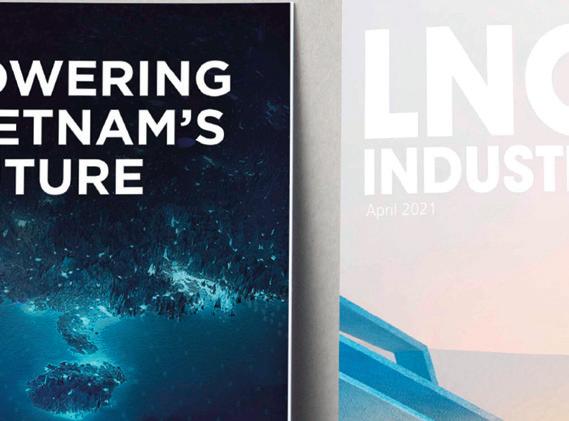





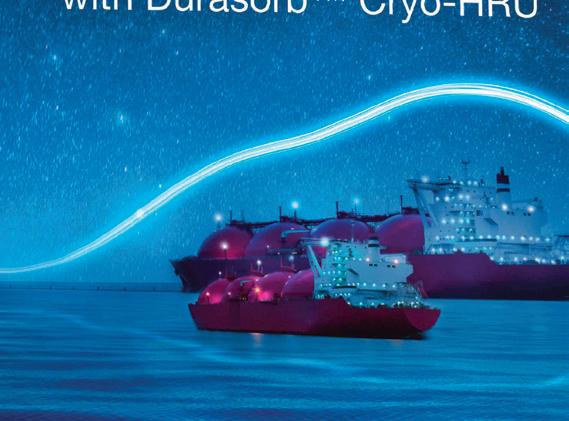


Dr James Li, Director for Europe, Sungrow ESS, explores how recent advancements in battery energy storage systems have elevated the technology’s status from ‘nice-to-have’ to ‘must-have’ in the global energy transition.
The global energy system remains one of the biggest drivers of climate change, with fossil fuel dependence continuing to push greenhouse gas emissions higher. As the climate crisis escalates, the pressure to transition to renewable energy sources has never

been greater. But there is a challenge – renewables like solar and wind are inherently intermittent and, until a few years ago, energy storage solutions like pumped storage power plants have not been scalable enough to keep up with growing demand worldwide, threatening the stability of grids. This is why next-generation battery energy storage systems (BESS) are a game-changer, offering a way to store renewable energy at scale and bridge the gap between supply and demand.
Welcome advancements
For several reasons, BESS are not only a cornerstone technology for the energy industry, but a catalytic one. First is their ability to capture surplus electricity generated during periods of high renewable output and releasing it when
demand exceeds supply. Second is their innate ability to integrate other renewable energy sources into the energy mix to better meet growing demand. BESS also contribute to frequency regulation and voltage control, helping maintain optimal grid stability and ensuring a reliable power supply for consumers, acting as a buffer against fluctuations in renewable energy generation.
The benefits of next-generation BESS have created a booming market. According to BloombergNEF, the global BESS market is expected to grow by 21% annually through to 2030.1 At a European level, BESS capacity is expected to grow at a combined annual rate of almost 50% – more than quadrupling between 2024 – 2028.
A major factor fuelling growth in the BESS market is the significant drop in battery costs.2 In 2024, the price per kWh for BESS systems fell by 40% compared to 2023, now averaging US$165/kWh – less than half the cost from 2020. Equally importantly, new technologies and innovations have led to significantly more efficient BESS projects, reducing their overall CAPEX and OPEX and opening the door for broader adaptation of these solutions. These technologies include highly advanced liquid-cooled systems, innovative chemistry to enable higher energy density, and advanced artificial intelligence (AI) operations and maintenance functions that boost efficiency and safety.
Global policy is also accelerating BESS market development. For example, delegates at COP29 agreed to a milestone pledge to raise global energy storage capacity to
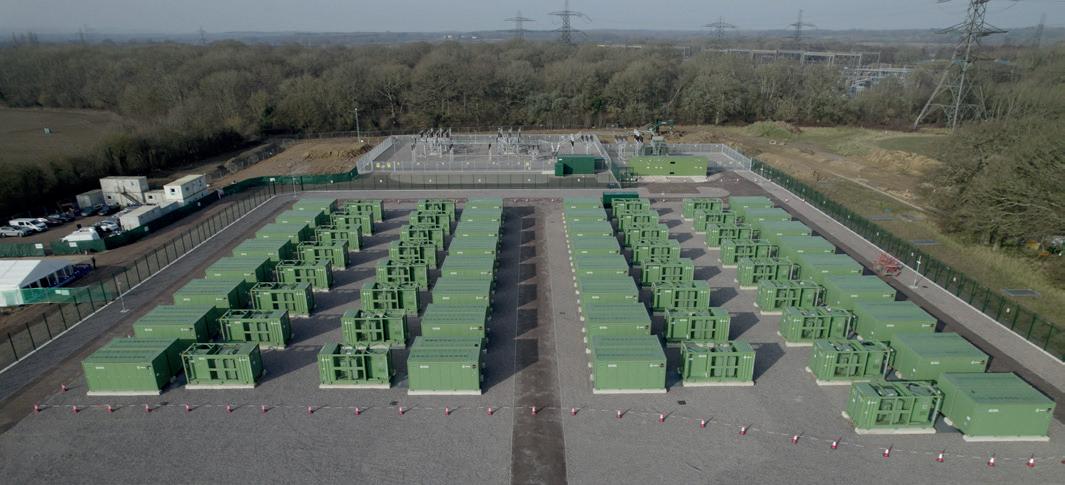
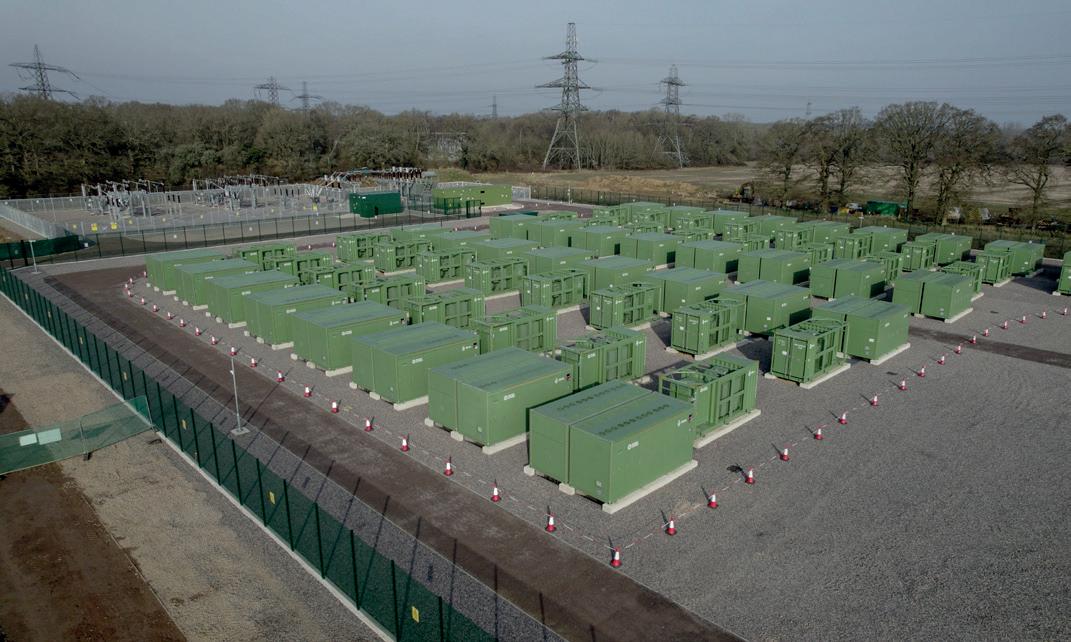
1.5 TW by 2030 and to scale up investments in the electricity grid away from fossil fuel reliance. In other words, there are ambitious global and domestic targets in place around renewables and a strong pipeline of storage solutions in place to help drive the industry forward.
Gathering momentum
BESS solutions are becoming an increasingly viable investment for businesses that are moving towards renewables. The average capacity of batteries being produced by companies applying for BESS project planning permission in the UK has now risen from 27 MW in 2019 to 80 MW – an increase of 196%. 3 For context, 80 MW capacity could power roughly 125 000 UK homes for several hours during peak demand periods.
If this continues, economies of scale will be created and – in tandem with advancements in battery chemistry, manufacturing processes, and system integration – an increasingly cost-effective yet higher-performing suite of BESS solutions. This is not just music to the ears of businesses. The UK government estimates that technologies like battery storage could save the national energy system up to £40 billion by 2050.4 This would help reduce energy bills and support the transition to a low-carbon economy.
While a boost in capacity seems to be the logical next step in BESS evolution, renewables integration is less focused on as the momentum around battery capacity continues to grow. This refers to the ability of a BESS solution to integrate multiple renewable energy technologies into the grid, creating a more resilient and diversified energy ecosystem.
The impact of this capability is huge: BESS will help mitigate price volatility caused by the variable nature of renewable energy production. This is good news for UK households in the face of energy price fluctuations. Essentially, the new generation of BESS acts as a buffer. By storing excess energy from renewable sources during peak production times and releasing it during periods of high demand or low production, BESS could help stabilise energy prices and supply.
In addition, BESS can address both sides of the intermittency challenge, providing power during shortfalls and capturing excess energy during peak periods. This helps to avoid scenarios such as the £1.5 billion spent to curtail over 6.5 TWh of wind power between January 2021 and April 2023.5 BESS therefore represents a significant economic saving opportunity by maximising the value of the UK’s renewable energy investments.
Innovating beyond power
For BESS to become the backbone of the UK’s sustainable energy future, questions must be directed towards how next-generation solutions can power the world in a responsible way.
As the Bramley project case study highlights, there is a growing focus on safety. The integration of early thermal runaway detection and containment mechanisms has become a priority in the design of modern storage systems and burn testing is growing in scale to support this.6 By proactively addressing fire risks, these safety innovations give consumers
and operators confidence that BESS solutions are secure and reliable.
Smart systems are also playing a more prominent role in battery storage management. With advanced sensors, real-time monitoring, and AI, the most advanced BESS systems can now anticipate fluctuations in energy supply and demand, enabling more efficient operations. These intelligent systems will become an integral part of maintaining grid stability in the future to ensure that renewable energy is deployed where it is needed most. In fact, there are already examples of new solutions leveraging AI to optimise energy strategies and analyse solar power predictions and household load consumption in real time.
Finally, for BESS to become a mainstay, the next wave of advancements must be designed with the battery’s environmental impact in mind. The industry is working to reduce the carbon footprint of battery manufacturing processes from multiple angles, for example, through the use of sustainably sourced materials. As recycling technologies improve, the circular economy for battery materials will become even more viable, further enhancing the sustainability of energy storage solutions.
Conclusion
Battery storage technology has rapidly evolved, being transformed from a basic back-up solution to an essential component in the global energy transition. The current state of the BESS market reflects impressive advancements in cost efficiency, safety, and system integration, with innovations such as liquid cooling and extended-duration storage pushing the boundaries of what is possible. Yet these are still the early days of evolution for this technology.
As the sector continues to mature, industry players – from manufacturers to researchers – must be encouraged to work collaboratively to refine current technologies. The collective efforts of these stakeholders will play a critical role in scaling effective storage solutions and getting the most out of them to meet the growing demand for clean, reliable energy. The summer of energy storage has not peaked – it has only just begun.
References
1. NSITEM, N., ‘Global Energy Storage Market Records Biggest Jump Yet’, BloombergNEF (25 April 2024), https://about.bnef.com/blog/global-energystorage-market-records-biggest-jump-yet/
2. PINDAR, R., ‘Battery Report 2024: BESS surging in the “Decade of Energy Storage”’, Mewburn Ellis, (4 February 2024), www.mewburn.com/news-insights/ battery-report-2024-bess-surging-in-the-decade-of-energy-storage
3. ‘Booming pipeline of battery projects increases by two-thirds in last 12 months’, RenewableUK, (2 May 2024), www.renewableuk.com/news-and-resources/ press-releases/booming-pipeline-of-battery-projects-increases-by-two-thirds-inlast-12-months
4. ‘What is battery storage?’, National Grid, (9 May 2023), www.nationalgrid.com/ stories/energy-explained/what-is-battery-storage
5. MACE, M., ‘Report: Wasted wind power costing Britain £1.5bn’, Edie, (June 2023), www.edie.net/report-wasted-wind-power-costing-britain-1-5bn
6. ‘Setting a New Safety Benchmark for the Industry: Sungrow Achieves Success in the World’s Largest BESS Fire Test’, Sungrow, (November 2024), https://uk.sungrowpower.com/newsDetail/4184
7. ‘Sungrow Delivery Success Story: From Grid Energization to Commercial Operation in Just Two Weeks: Bramley 331MWh BESS Project Sets a New Record in the UK’, Sungrow, (March 2025), https://en.sungrowpower.com/ newsDetail/6226/sungrow-delivery-success-story-from-grid-energization-tocommercial-operation-in-just-two-weeks-bramley-331mwh-bess-project-sets-anew-record-in-the-uk
Progress through collaboration: A case study
To progress BESS even further, the industry will need to nurture strong partnerships. Pooling expertise is a proven way to accelerate the delivery of stronger energy solutions at a national scale, as the UK’s Bramley BESS project shows. The Bramley BESS was developed in partnership between Sungrow and BW ESS. Innovative technologies and streamlined installation make this a prime example of what can be expected from the latest iterations of BESS.
While past systems were designed to handle short bursts of power delivery, current energy storage solutions must now be capable of providing longer support to ensure grid reliability as renewables play a larger role in the energy mix. A game-changing aspect of the Bramley project is its extended duration storage capabilities. With a storage capacity of 331 MWh, the Bramley BESS can support the grid for up to three hours, even when renewable energy generation is at a low point. This shift towards extended-duration storage is key to addressing the intermittency challenges posed by renewable energy.
Another of the key innovations in the Bramley BESS is the use of liquid cooling technology. As BESS capacity and power scales up, managing heat becomes a critical challenge. Excessive heat can reduce the lifespan of batteries and negatively impact the overall efficiency of the system. Liquid cooling systems maintain ideal temperatures, enhancing storage efficiency and safeguarding the system from potential thermal failures, examples of which have been seen in 2025 across the globe. This reflects a broader industry trend towards more sophisticated thermal management as operators recognise the importance of heat control in large scale deployments.
Traditionally, high CAPEX and OPEX levels had been an obstacle for business users looking to invest in BESS. An additional reason the Bramley solution stands out is its compact and modular system design, which reduces the overall footprint of the project and the complexity and time involved in installations. The Bramley project uses Sungrow’s PowerTitan 2.0, which is an all-in-one AC-DC block system that incorporates pre-assembled battery modules and power conversion systems. The modular approach reduces installation time, with the project moving from grid connection to commercial operation in just 12 days – a record for BESS delivery in the UK and across Europe.7 Such efficiency also minimises CAPEX and OPEX costs by simplifying the integration process. It takes the accessibility of these systems up to the next level, helping move the industry as a whole much closer to its energy transition target.

EVENT NEWS
The UK’s largest solar and storage exhibition returns to Birmingham this September
Solar & Storage Live UK will return to the NEC in Birmingham from 23 – 25 September 2025, and will welcome over 16 000 solar and energy storage installers, property owners, developers, landowners, utilities, and everyone working in the solar and energy storage sector, all looking for the best solutions for their commercial, industrial, and large scale solar projects and exploring the emerging business and career opportunities in the market.
Solar & Storage Live UK 2025 will host more than 500 global exhibitors showcasing pioneering technologies and services. Leading names such as GivEnergy, CATL Battery, Ecoflow, Huawei, JA Solar, Jinko, Longi, Omexom, Open Solar, Rolls-Royce, RSK, Segen, Solarport Systems, Solis, Sungrow, and Trina have confirmed their participation, providing direct access to the latest innovations shaping the future of solar and energy storage. Showcased product categories include solar photovoltaic (PV) panels, mounting systems, inverters, energy storage systems, batteries, and professional services including accreditation, consultation, project finance, insurance, legal services, and so much more.
Learn from hundreds of solar experts
More than 250 expert speakers, including government officials, experienced practitioners, and innovators, will delve into the latest industry trends and share insights into the future development of solar and energy storage. Industry leaders from different fields will share their views and expertise on key topics, covering everything from government incentives to breakthrough solar technologies and successful project case studies.
The four presentation theatres include:
> Residential Theatre – Focused on installers, local authorities and homeowners, with key discussions on community solar, financing options, and installer innovations.
> Keynote/Utility-Scale Theatre – Highlighting how sectors like manufacturing, retail, and healthcare are integrating solar, including discussions on financing, corporate PPAs, and grid connection challenges.
> Commercial & Industrial Theatre – Covering large scale solar deployment, including policy updates, grid constraints, financing strategies, and artificial intelligence-driven solar optimisation.
> Storage Theatre – Addressing key challenges in battery storage, grid integration, and alternative energy storage technologies such as thermal energy storage, compressed air storage, and pumped hydro.
Other exciting features and show highlights
> Meet the Installers: The Meet the Installers zone allows attendees to connect with local UK installers offering expert services tailored to specific needs. Whether an industrial or commercial property owner, property development company or landowner, the right partners will be available to bring solar projects to life.
> Installer Training Hub: The Installer Training Hub is dedicated to solar PV module and mounting, battery storage, and inverter installation and commissioning. This hub allows registrants to attend hands-on training and explore the latest products from the manufacturers.
> European Solar Games: The European Solar Games aim to raise awareness of safe and high-quality installation through exciting competitions where solar installers compete to install six solar panels on a roof within one hour. Live competition heats run throughout the show days.
> Recruitment Zone: Aiming to attract new pools of job candidates to the solar and storage industry, the recruitment zone will showcase hiring businesses and their current job vacancies to a wide range of candidates for all levels of roles. Attendees will be able to familiarise themselves with the career trends in the solar energy market, the available roles, and the required skill sets for advanced career development
> Meetup Zone: Join the free-to-attend networking events to connect with thousands of industry leaders, experts and enthusiasts to exchange insights, build valuable connections and partnerships.
Date: 23 – 25 September 2025 (Tuesday – Thursday)
Venue: The NEC, Birmingham Website: www.terrapinn.com/ ssl-uk/energyglobal
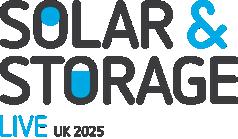



GLOBAL NEWS
Inyanga Marine Energy Group announces contracts for Welsh tidal energy project
Inyanga Marine Energy Group has announced the winners of contracts to build its HydroWing tidal energy array.
The 20 MW HydroWing tidal energy array will be deployed at Morlais off Anglesey in Wales, one of the largest consented tidal energy projects in Europe. The demonstration pilot will deploy in 1Q26.
Hutchinson Engineering has already been announced as the company which will fabricate the foundation and rear nacelle.
The project will take place at Morlais off Anglesey, which is the only tidal energy demonstration zone of its kind in the world. It offers a unique ‘plug and play’ model for developers of tidal energy devices, helping reduce costs as they scale up operations. The Anglesey site has the potential to generate 240 MW of clean electricity.
It is run by social enterprise Menter Mon Morlais and the Welsh government have taken a £8 million equity stake in the project.
The Welsh government has also recently announced a £2 million equity investment in Inyanga Marine Energy Group.
Diary dates
Solar & Storage Live España 2025 25 – 26 June 2025 Valencia, Spain www.terrapinn.com/exhibition/solar-storage-live-espana
UK Solar Summit 01 – 02 July 2025 London, UK https://uss.solarenergyevents.com
SPE Offshore Europe 02 – 05 September 2025 Aberdeen, Scotland www.offshore-europe.co.uk
RE+ 2025
08 – 11 September 2025 Nevada, USA www.re-plus.com
Japan certifies Proteus 1.1 MW tidal turbine
Proteus Marine Renewables’ 1.1 MW tidal turbine, the AR1100, has officially received certification from Japan’s Ministry of Economy, Trade, and Industry (METI). The certification confirms the system meets Japan’s regulatory standards for power generation, marking another important step forward for tidal energy in the country. The turbine is now exporting power to the national grid.
This achievement follows a rigorous review and testing process by METI, verifying the AR1100’s operational safety and reliability. Certification was granted after successful performance demonstrations under a range of tidal conditions, including safe shutdown procedures, grid compliance, and emergency response capabilities.
Proteus upgraded the AR500 turbine with advanced pitch and yaw control systems and other key enhancements boosting performance and efficiency to achieve a 1.1 MW rated capacity. As a Series 2 turbine, the AR1100 represents the next stage in Proteus’ roadmap for scaling tidal power and serves as the forerunner to the AR3000 – the company’s most powerful turbine to date, scheduled for deployment in 2028.
Solar & Storage Live Zürich 2025 16 – 17 September 2025 Zurich, Switzerland www.terrapinn.com/exhibition/solar-storage-live-zurich
HUSUM WIND 2025 16 – 19 September 2025 Husum, Germany www.husumwind.com/en
Solar & Storage Live UK 2025 23 – 25 September 2025 Birmingham, UK www.terrapinn.com/exhibition/solar-storage-live/index.stm
Offshore Wind North East 05 – 06 November 2025 Sunderland, UK www.offshorewindne.com

GLOBAL NEWS
Studies put offshore charging on the horizon
Offshore charging for both battery-powered crew transfer vessels (CTVs) and service operation vessels (SOVs) could be on the horizon for wind farms of the future, according to two studies commissioned by ScottishPower Renewables (SPR).
The two reports – by MJR Power & Automation and Oasis Marine – are the last in a series of three commissioned by SPR to explore options for decarbonising and reducing greenhouse gas emissions from offshore wind farm operations.
The studies consolidated initial findings that the electrification of offshore operations was technically feasible using battery-powered SOVs, which stay out at sea for extended periods. The reports also looked at the potential to decarbonise offshore operations using electric CTVs that could be used for wind farms located closer to shore, with findings confirming that it is technically and operationally feasible.
Kishorn Port secures investment for major expansion
The Deputy First Minister, Kate Forbes, has announced investment of up to £24 million by the Highlands and Islands Enterprise (HIE) in Kishorn Port’s £42.2 million Phase 1a expansion project to aid the port’s role in the delivery of offshore wind projects in Scotland and elsewhere.
The project includes expansion of the dry dock and land reclamation, enabling the manufacture of floating offshore wind foundations. With a quarry on site, Kishorn is suited to the manufacturing of concrete floating offshore wind substructures, with local content, laydown, marshalling, and integration and assembly possible at the port as part of the wider project in the long-term.
The expanded facilities are forecast to attract projects with the potential of supporting up to 1500 jobs, when the port is fully developed. During the construction phase, 84 jobs will be created for up to 18 months.
This development opens Kishorn to new market opportunities and it is receiving strong expressions of interest to utilise the enlarged dry dock area, along with the additional laydown space, for floating offshore floating wind and decommissioning projects.
The principal contractor for the project is RJ McLeod, based in Scotland. Supporting services are also being delivered by Scottish firms including Wallace Stone, Affric, and Leapmoor.
EDF Group commissions first French floating offshore wind farm
The EDF Group, through its subsidiary EDF Renewables, and Enbridge Éolien France 2 S.a.r.l, a subsidiary of Enbridge Inc. and Canada Pension Plan Investment Board, has announced the full commissioning of the first French floating offshore wind farm, Provence Grand Large, located off the Gulf of Fos (Bouches-du-Rhône). With a capacity of 25 MW, the installation supplies the equivalent of the annual electricity consumption of 45 000 people.
The Provence Grand Large wind farm is a pilot project with three floating wind turbines installed 17 km off the coast of Port-Saint-Louis-du-Rhône.
The three wind turbines, built by Siemens Gamesa Renewable Energy, are installed on tension leg platforms inspired by technology used to stabilise oil platforms. Developed by SBM Offshore and IFP Energies Nouvelles, this technology is suitable for deepwater areas and provides great stability for the platform. The dynamic cables, built by Prysmian, ensure the transport of the electricity produced to the onshore connection station operated by RTE.
THE RENEWABLES REWIND
> Gurin Energy selects Saft BESS for first Japanese project
> RES submits planning application to Scottish ministers for BESS project
> Econergy enters German market with acquisition of two BESS projects
> Root-Power submits plans for new long duration battery storage
Follow our website and social media pages for more updates, industry news, and technical articles. www.energyglobal.com



GLOBAL NEWS
Solar Steel awarded supply deal by Solarig
Solar Steel, a leading company in the design and supply of solar trackers, has signed an agreement with Solarig for the delivery of 130 MW of its 1P solar trackers and fixed structures. The agreement includes the supply of over 5300 trackers and 530 fixed-tilt racks across a cluster of three projects in Italy.
Solar Steel’s 1P trackers and fixed structures will support more than 209 000 high-power modules, optimising solar capture in Italy’s uneven terrain. These systems are perfectly tailored to local land conditions, ensuring efficient energy generation and tracking performance.
Construction of the mixed solar parks – where Solarig will integrate both fixed and tracking systems – is set to begin in the coming months. Commissioning and operation are expected between late 2025 and early 2026. Both companies are committed to ensuring the positive impact of these projects under current Italian regulations, which guarantee minimal disruption to local flora and fauna.
Aura Power’s Grimsby solar farm reaches financial close
Aura Power’s third UK solar project, located in Grimsby, has secured project finance and started construction, culminating in a total of 190 MWp currently under construction. The company is on track to build out its 0.5 GWp pipeline of UK solar assets by 2028, due to timely grid connection dates and robust delivery strategy.
The Grimsby solar farm, situated in North East Lincolnshire, will feature a single-axis tracking system and carefully considered landscaping, delivering a 71% biodiversity net gain. This aligns with ongoing commitment to environmental sustainability alongside clean energy generation.
Like the Kemble and Burtree Lane projects, Grimsby has secured a government-backed Contract for Difference, won through Allocation Round 5. Early works on the new substation are already underway, with the main construction phase set to begin shortly. Energisation is being targeted for early 2026.
Rabobank provided senior debt for this project.

